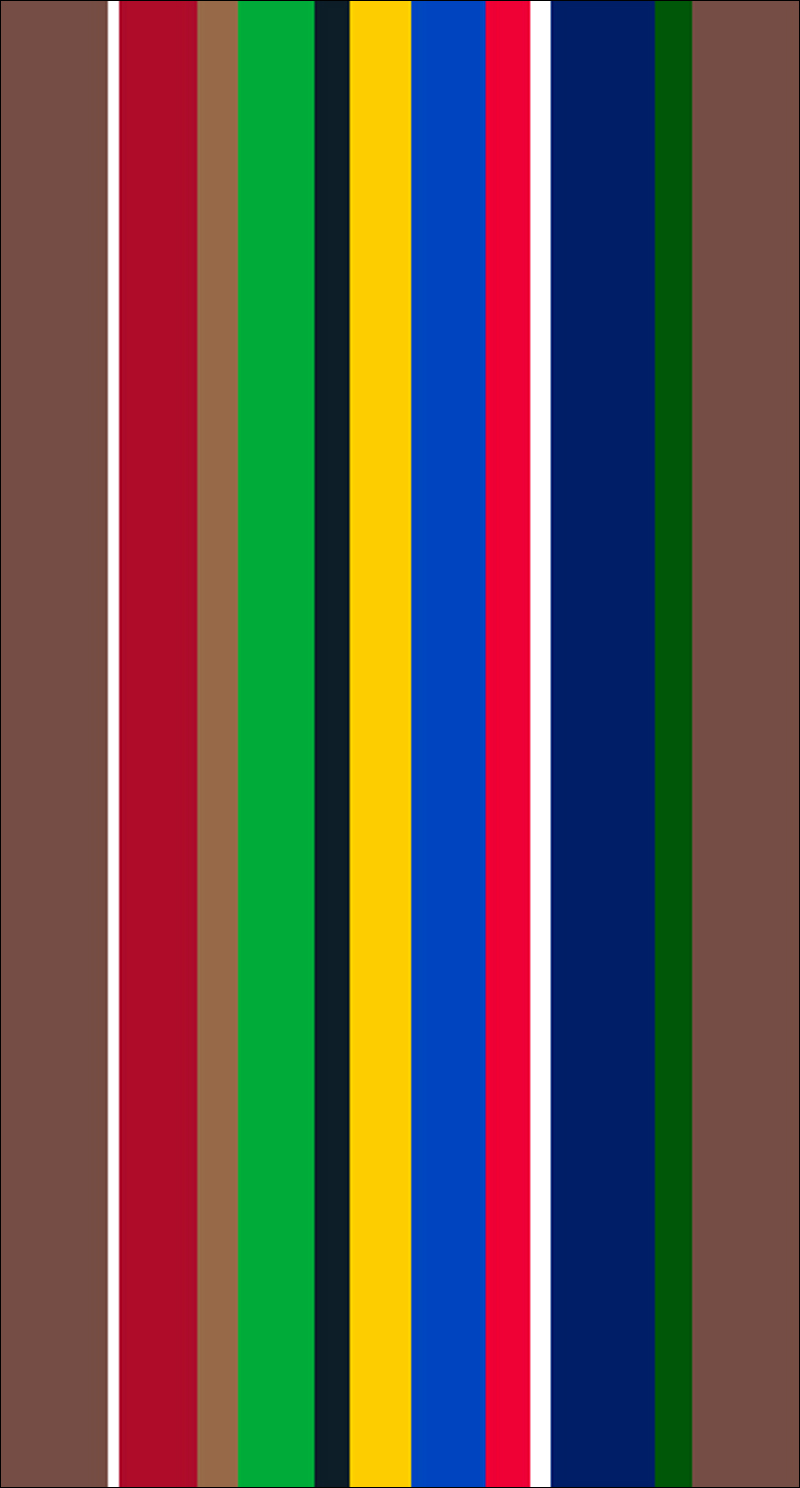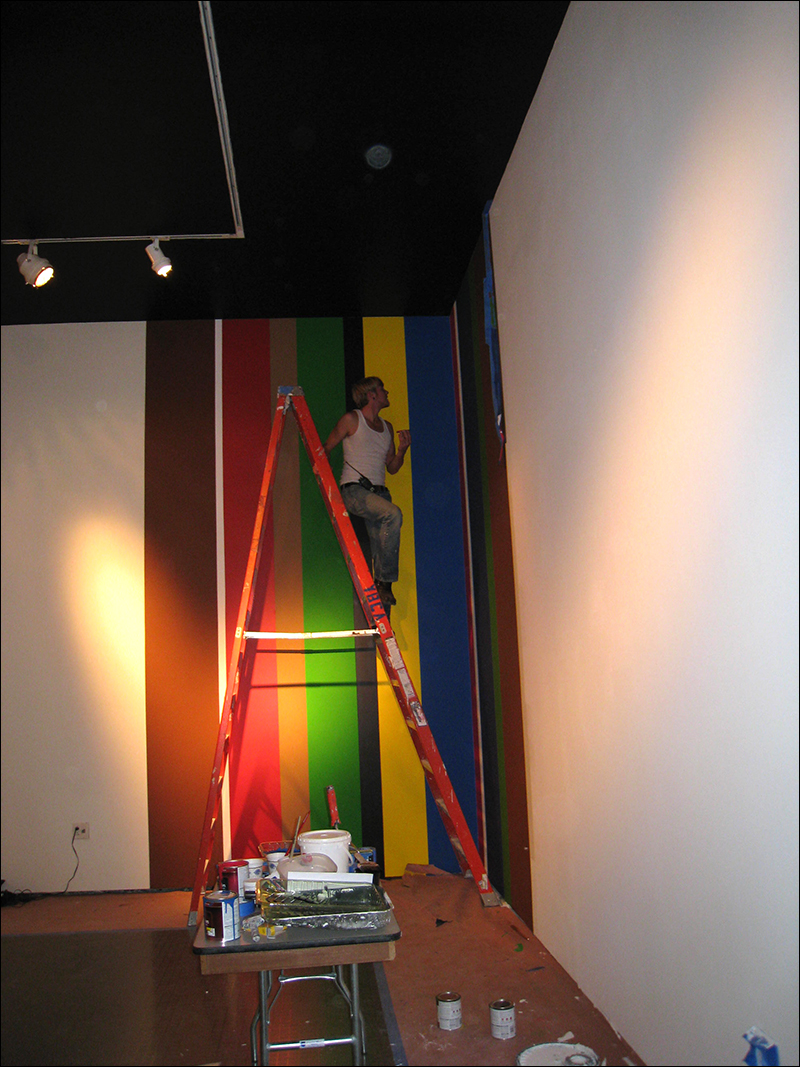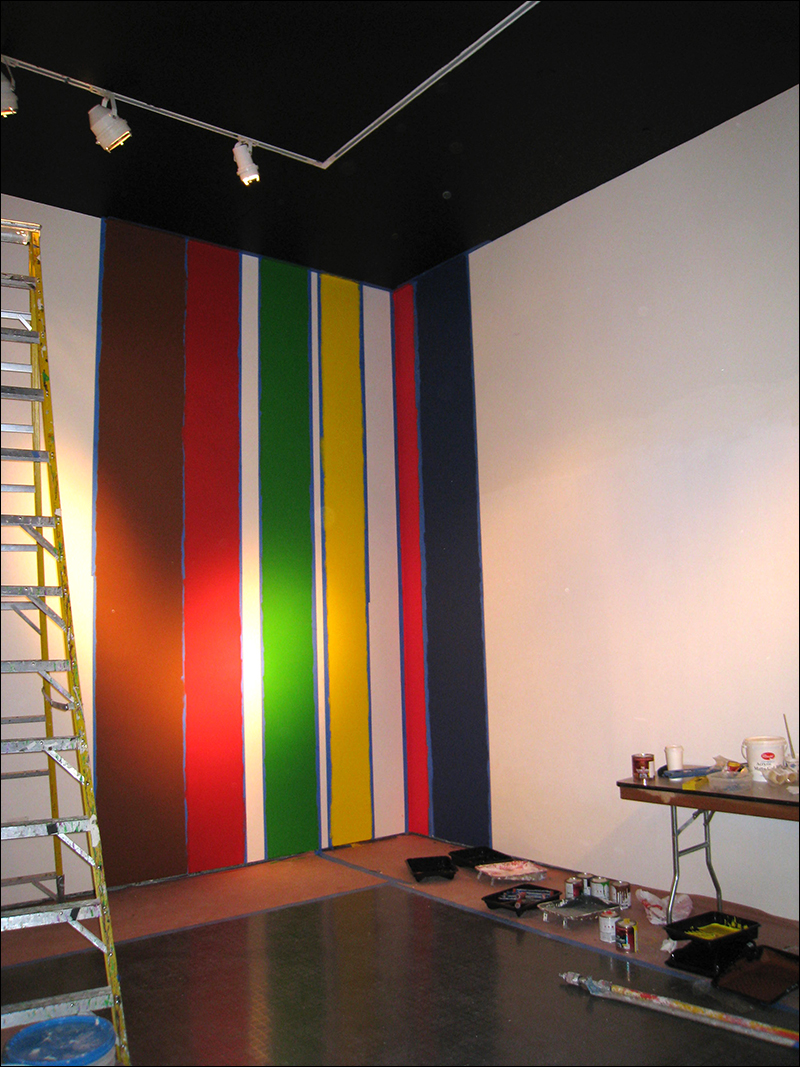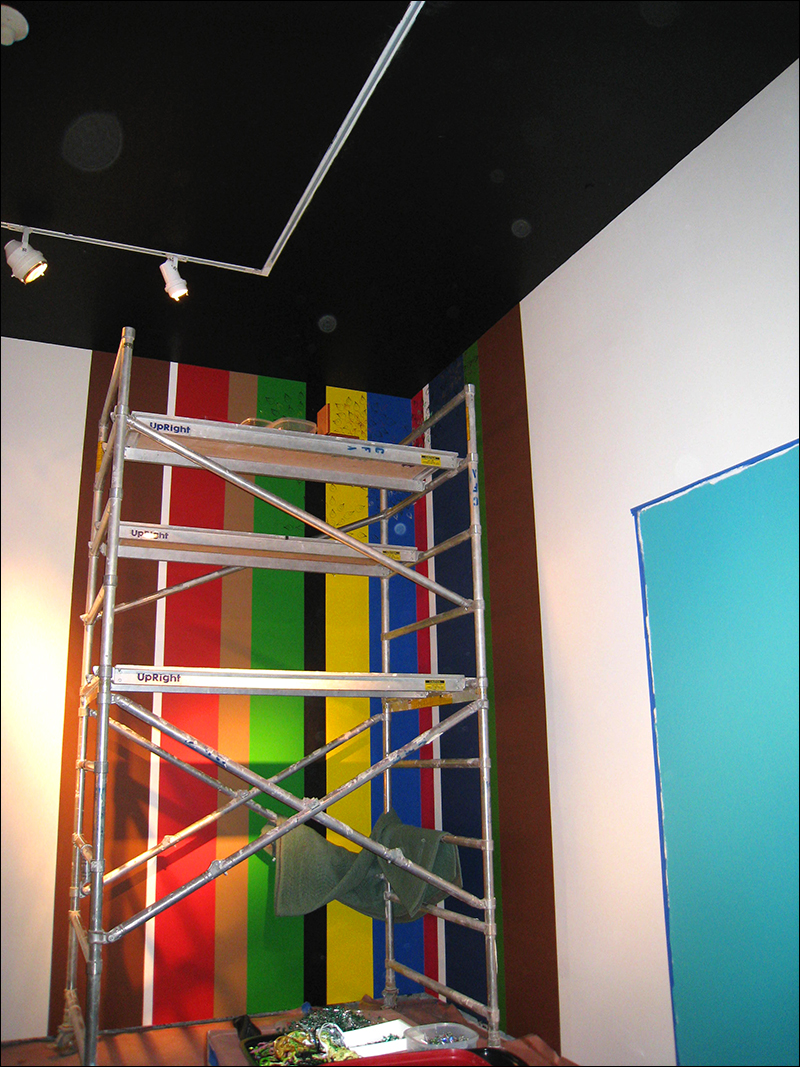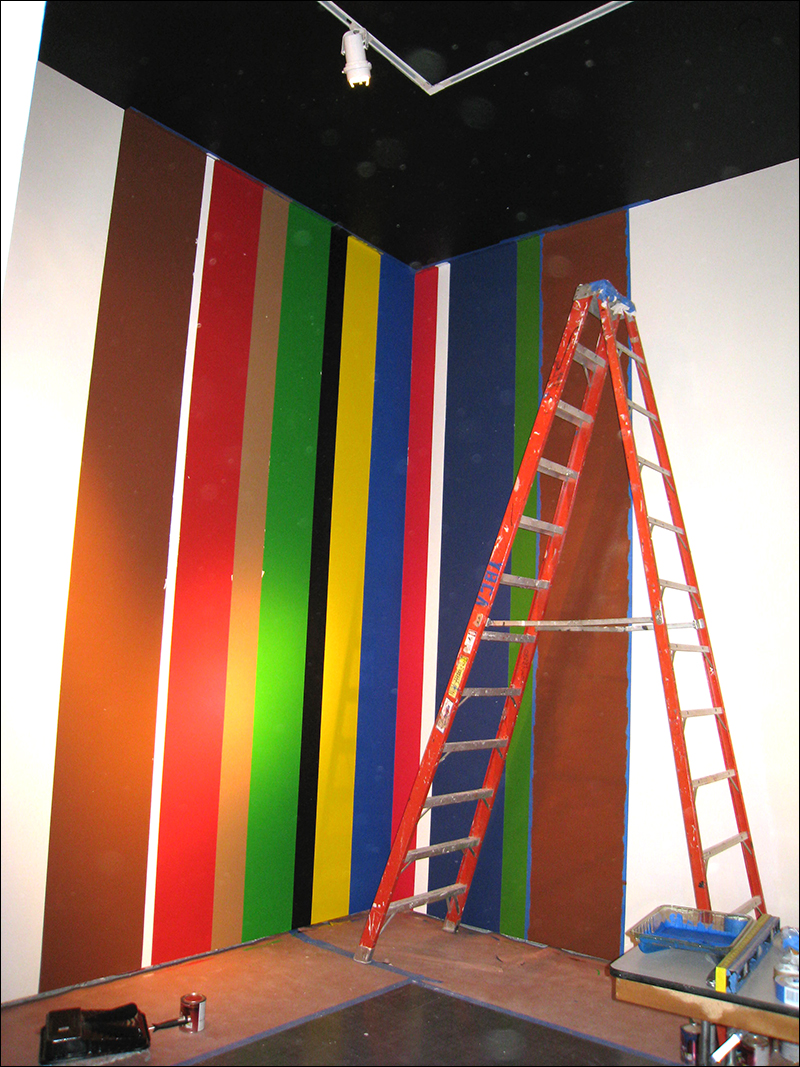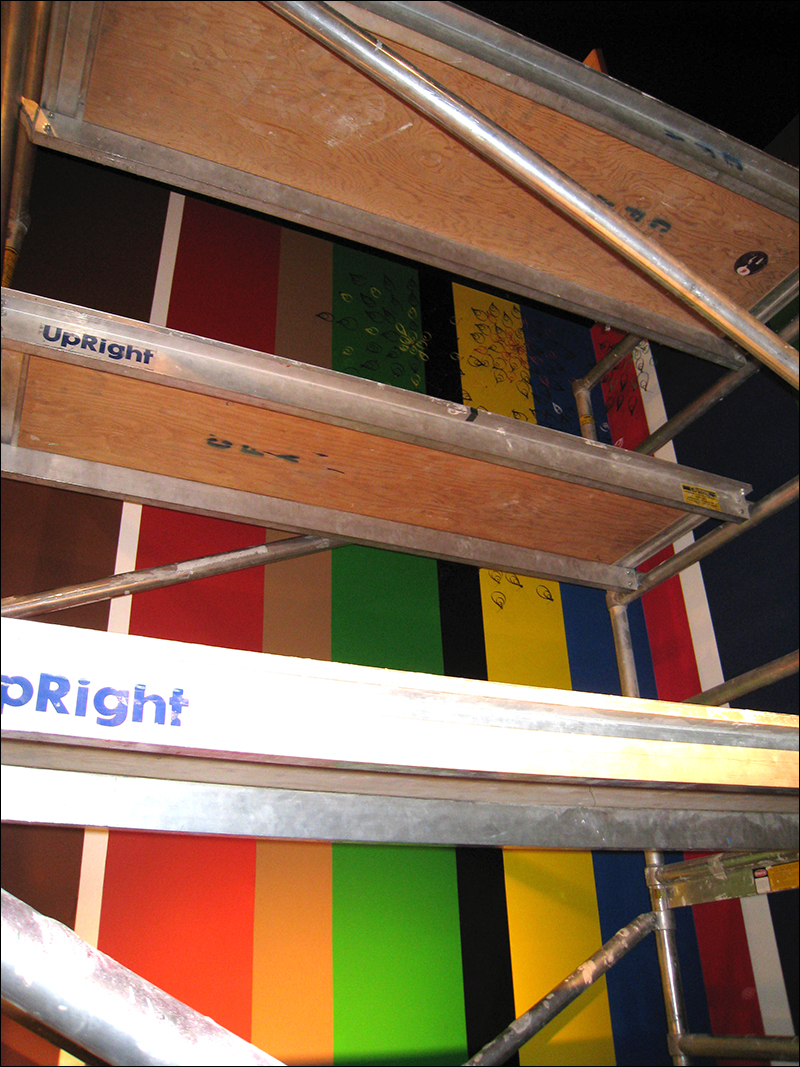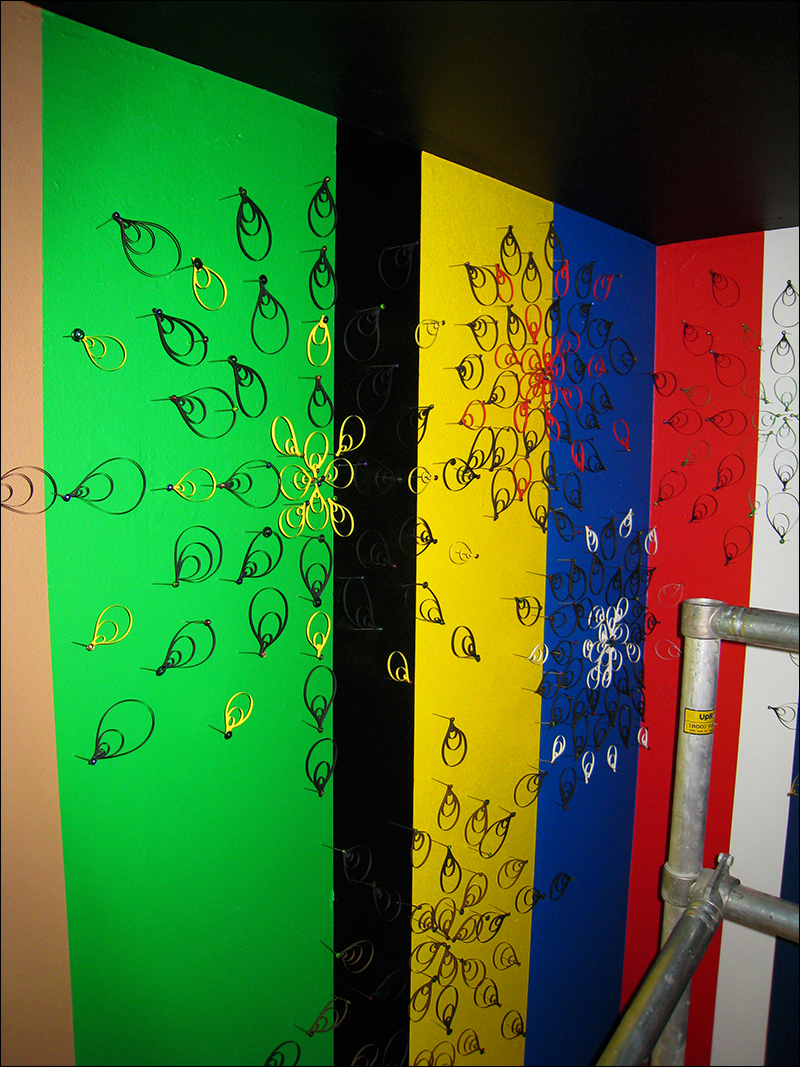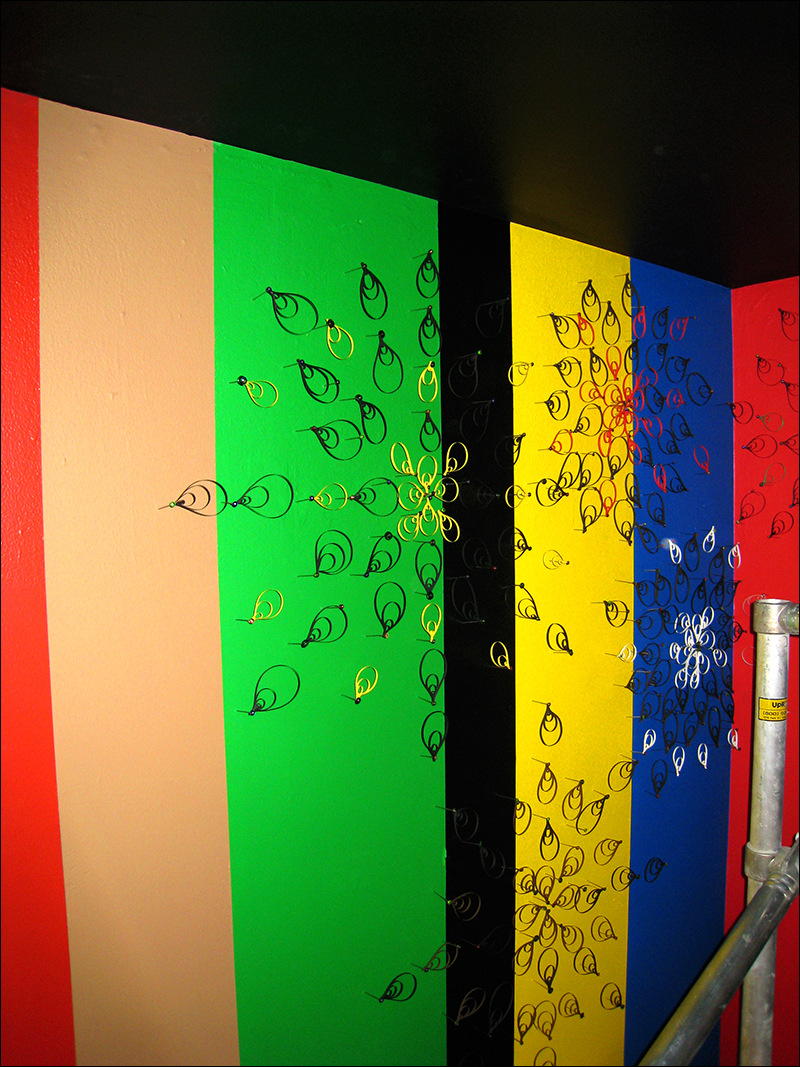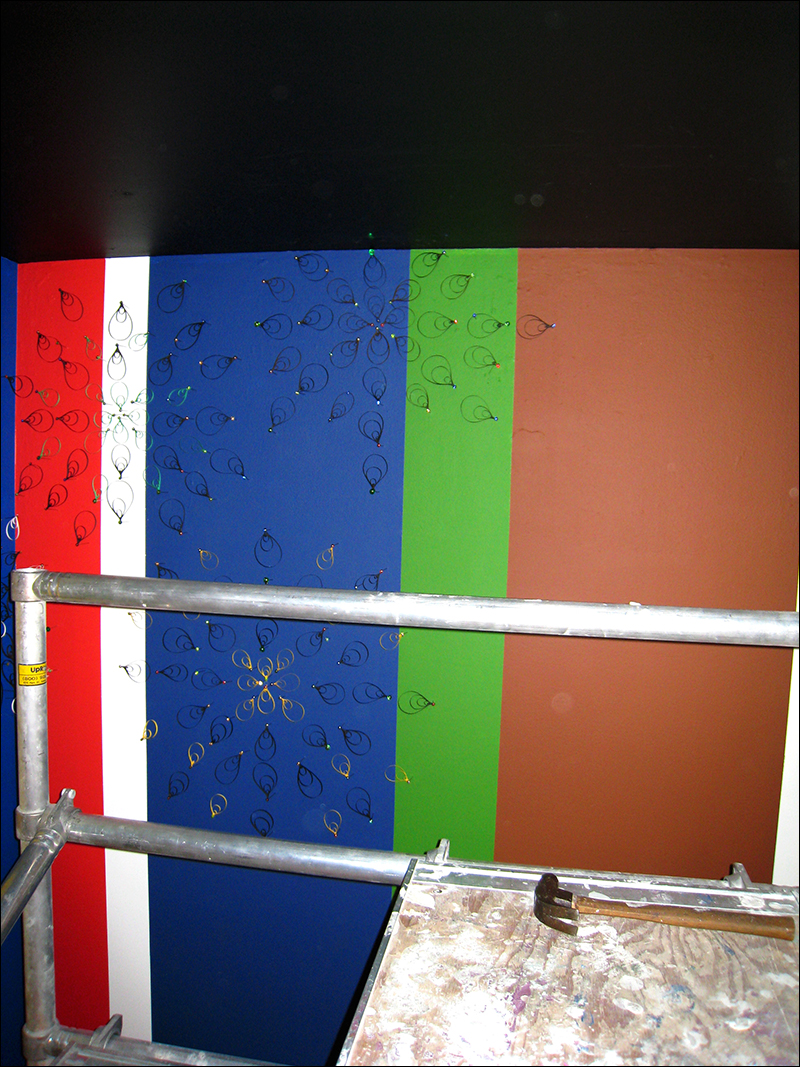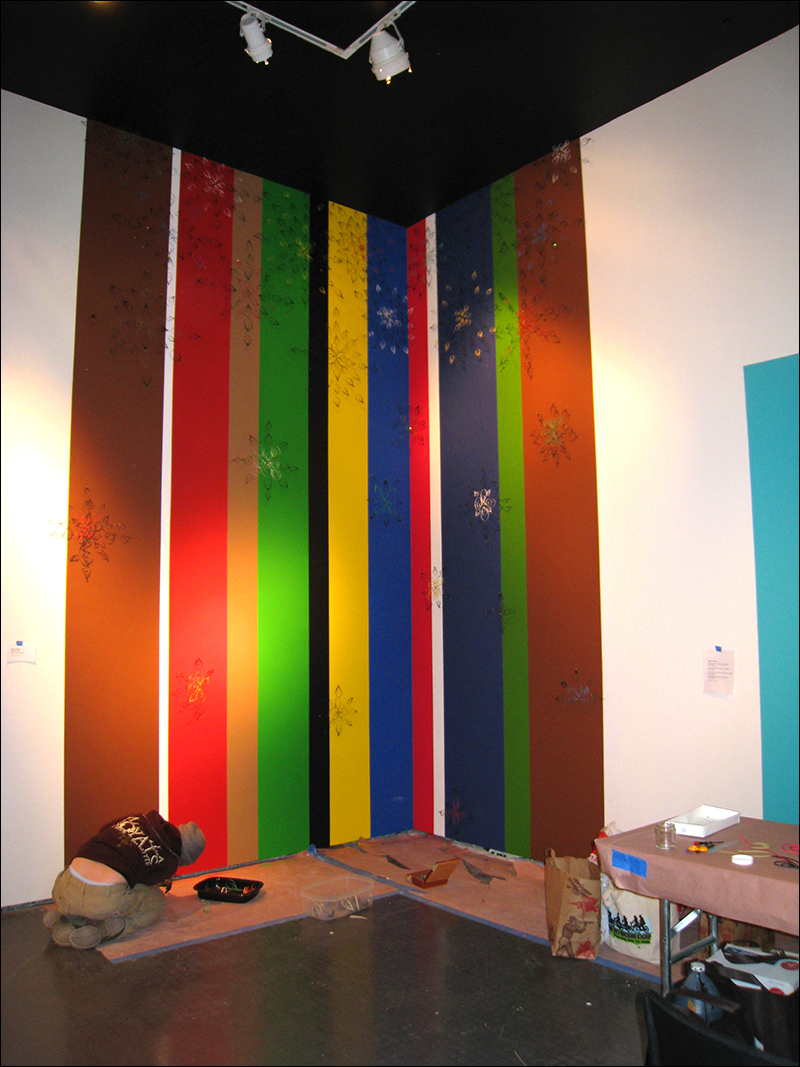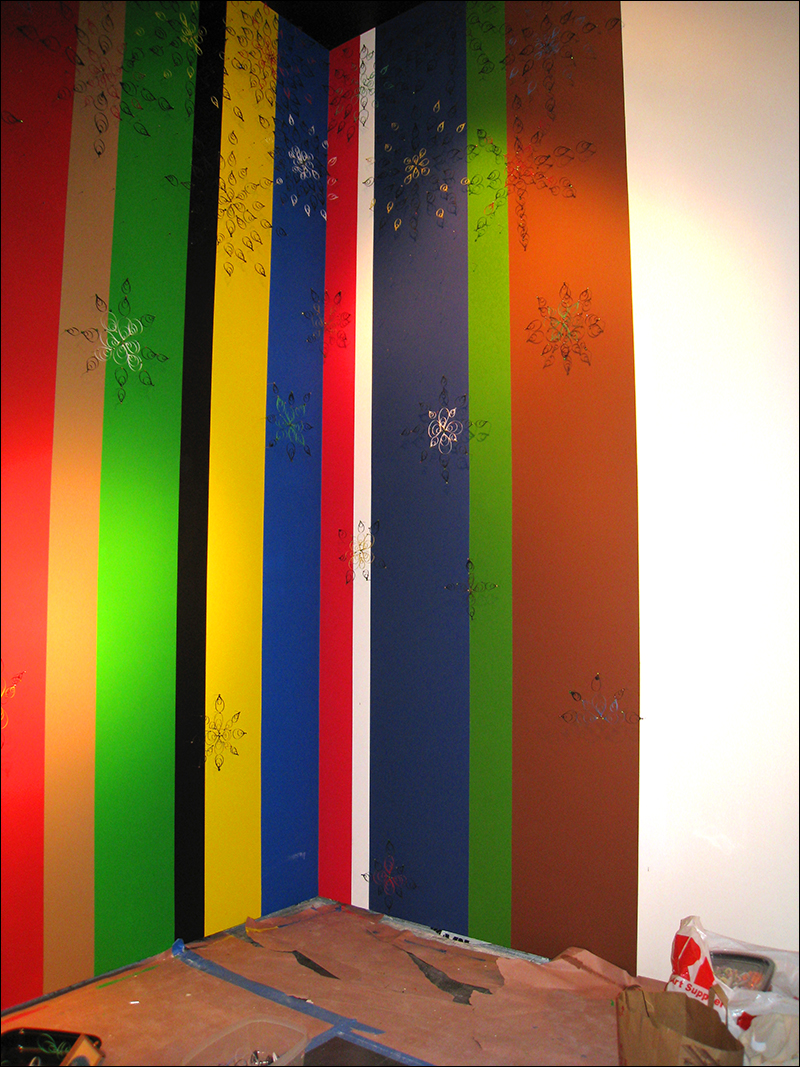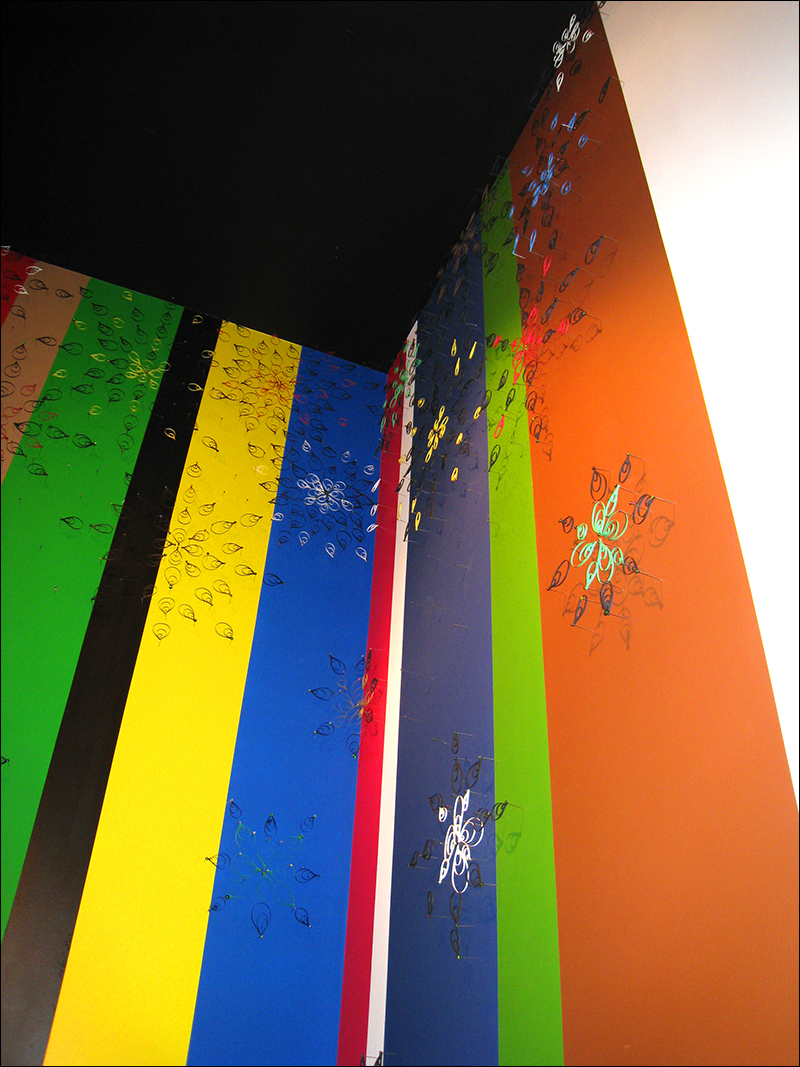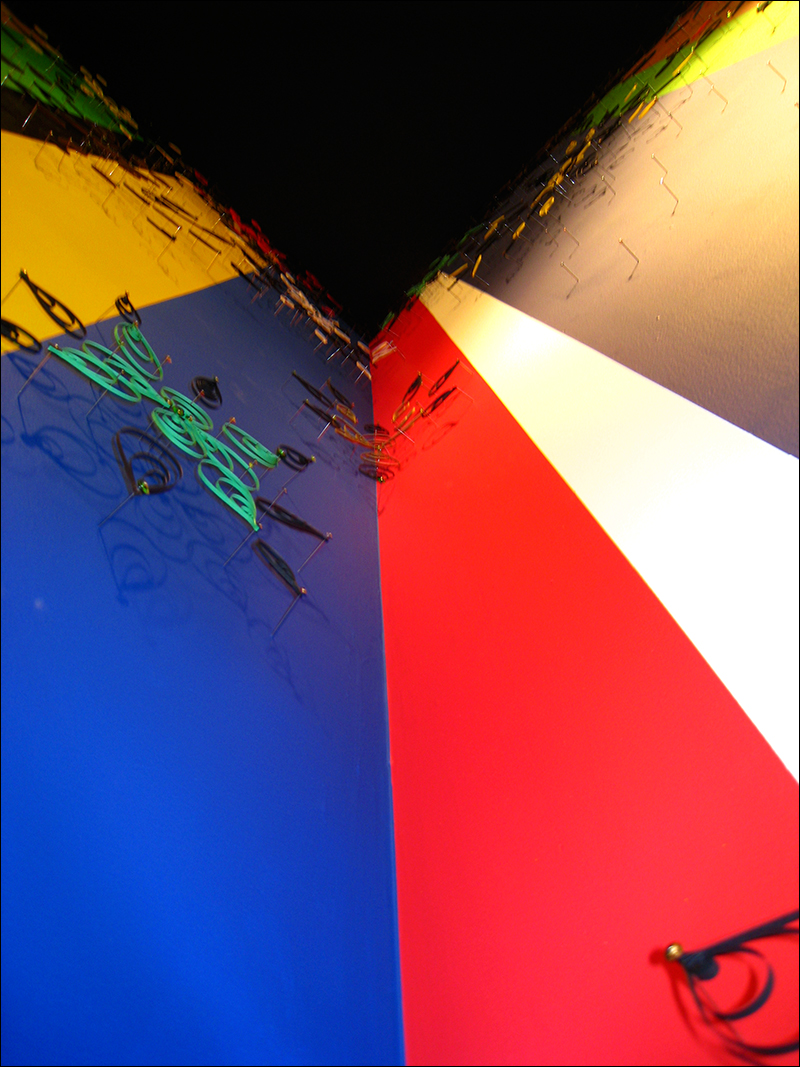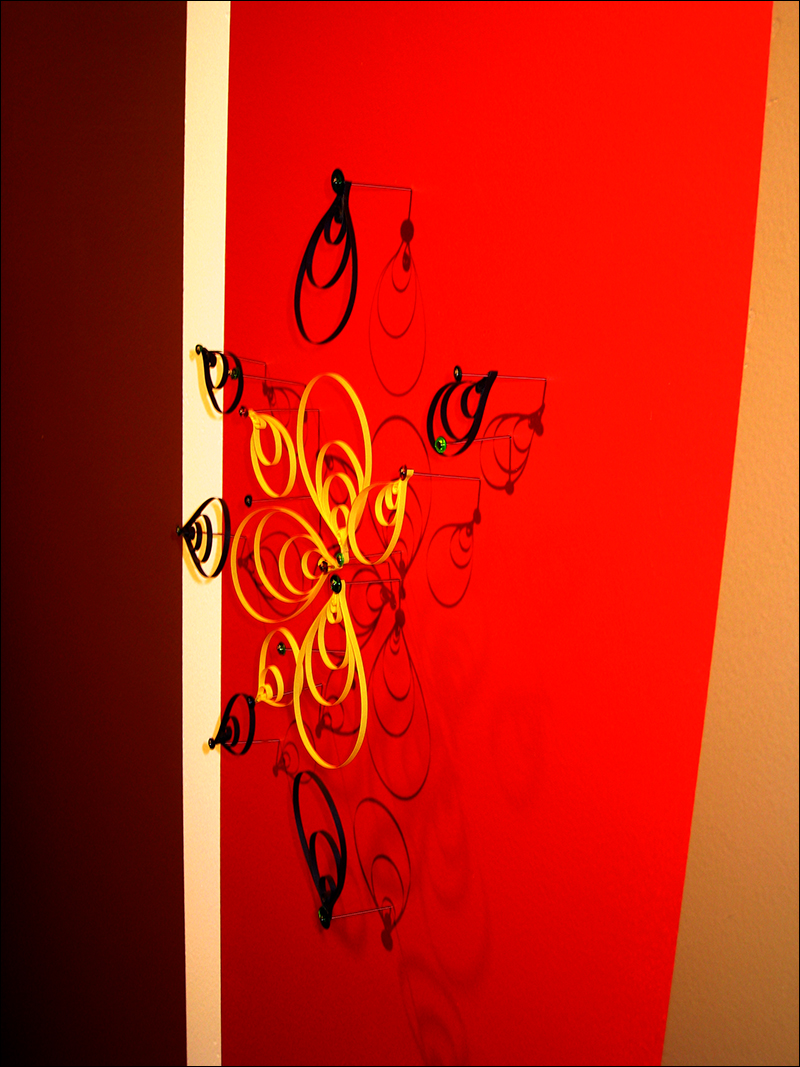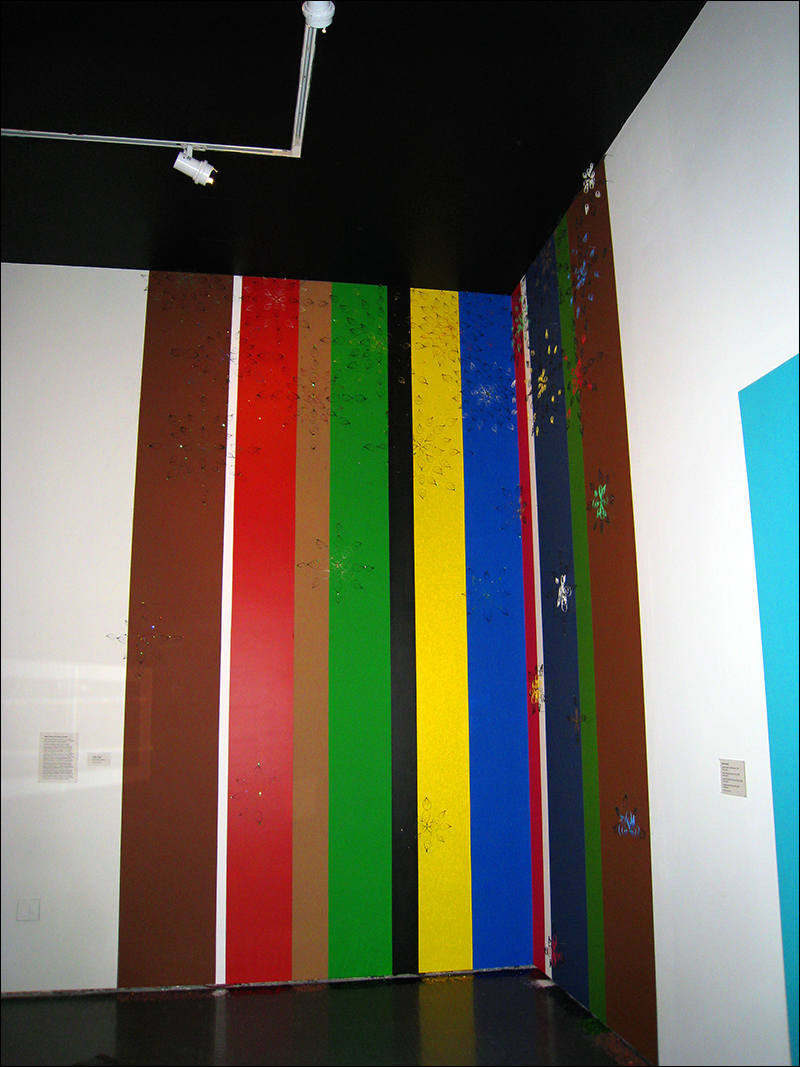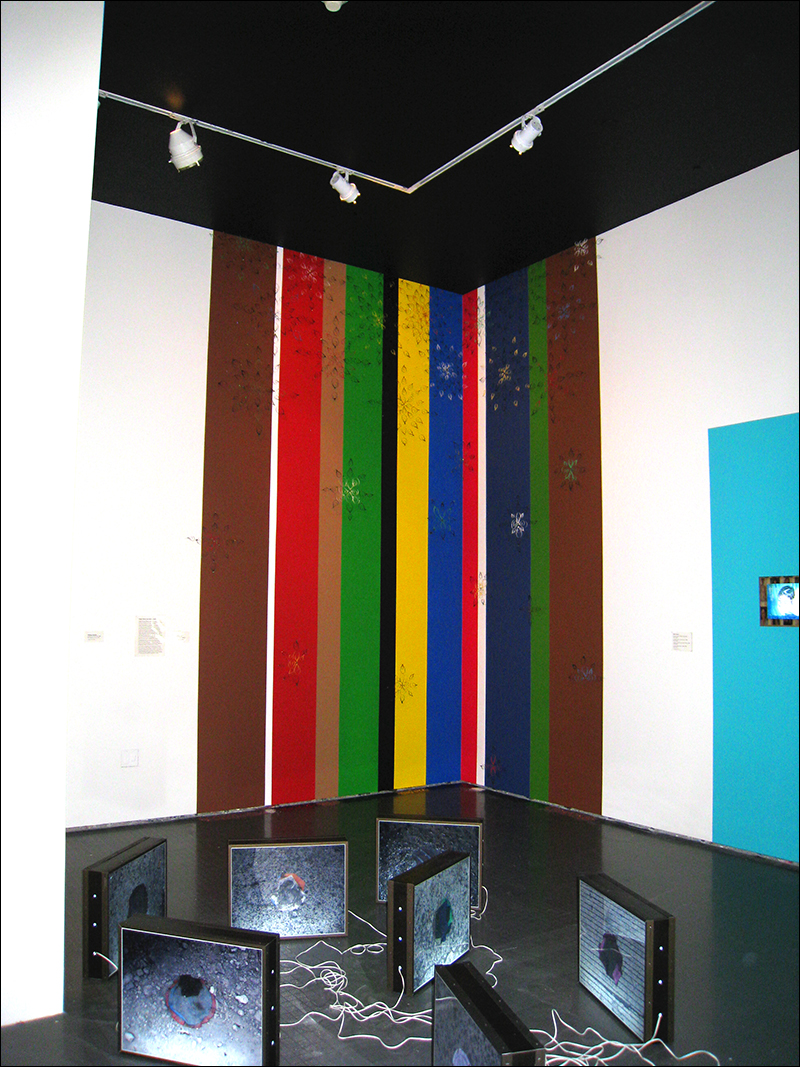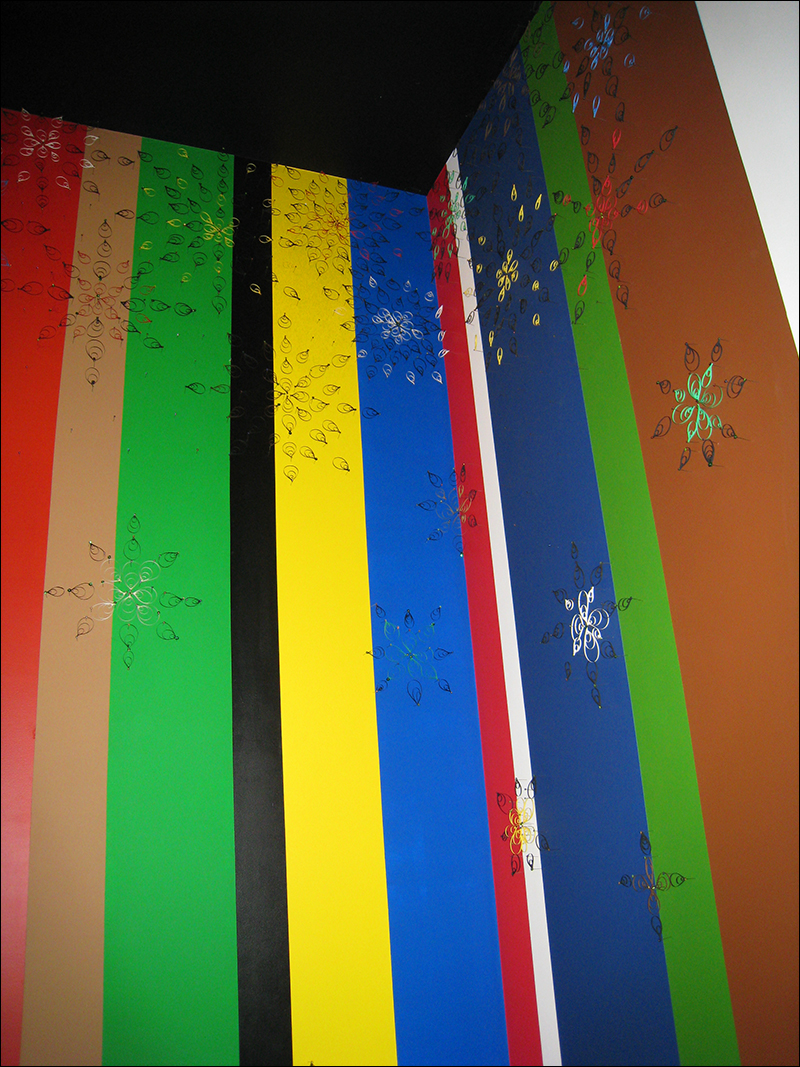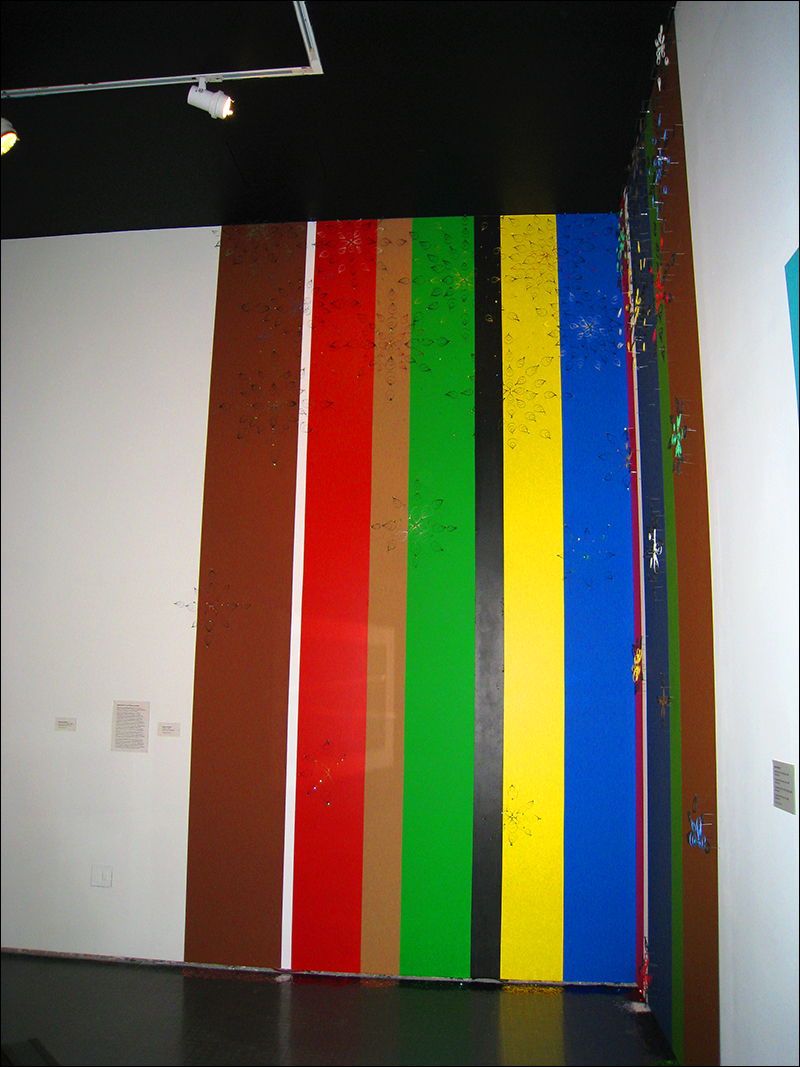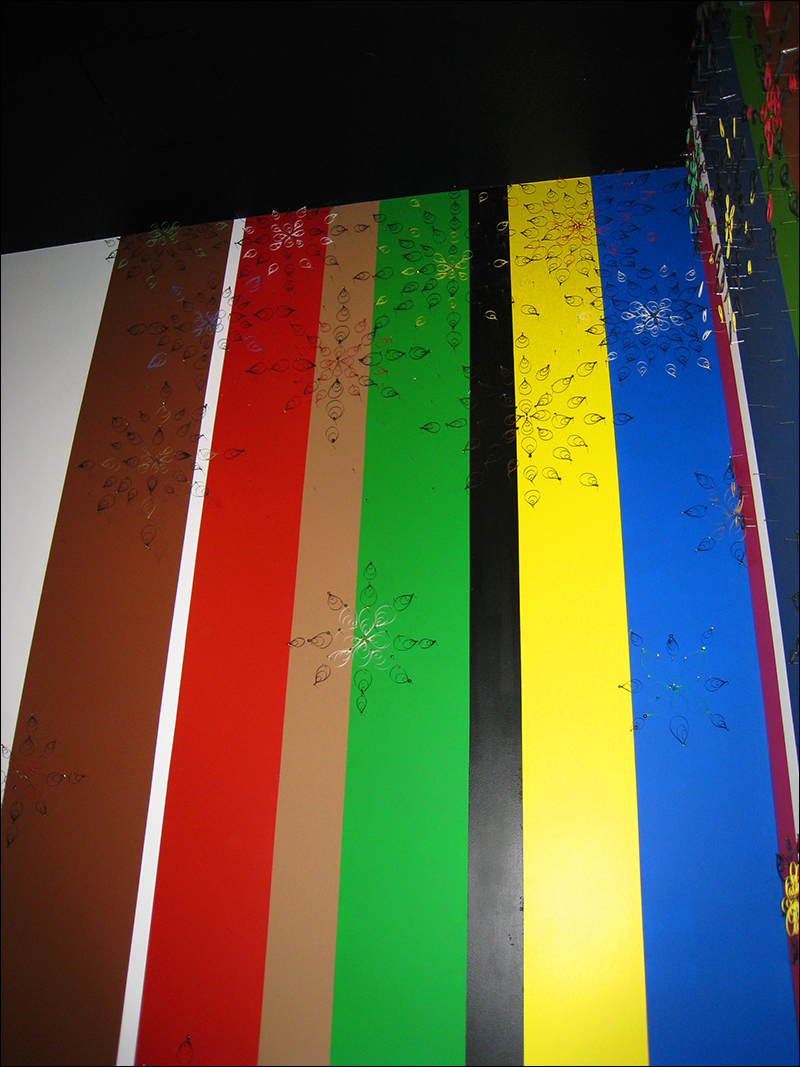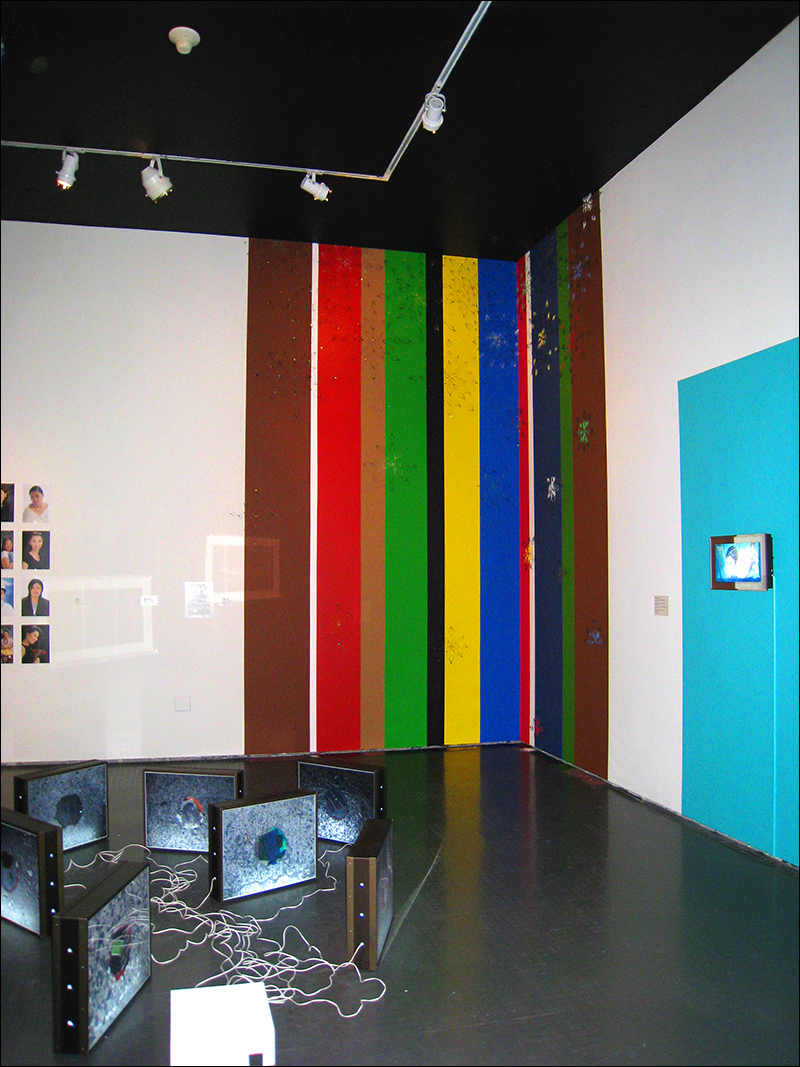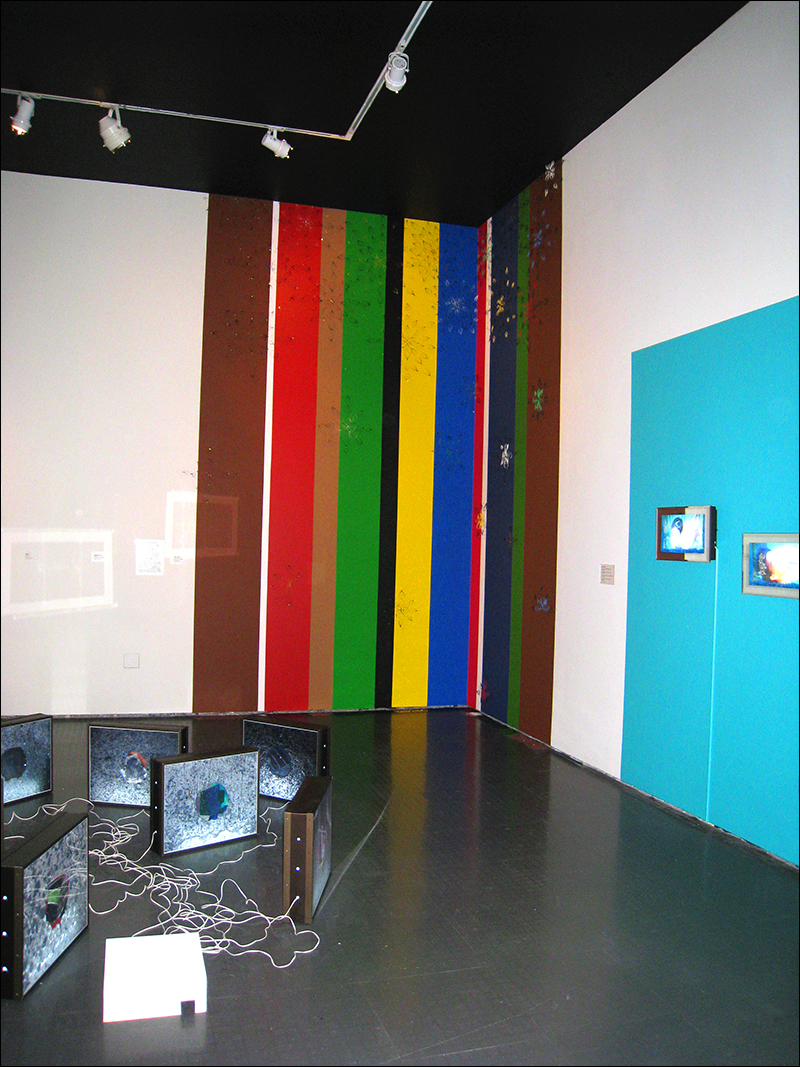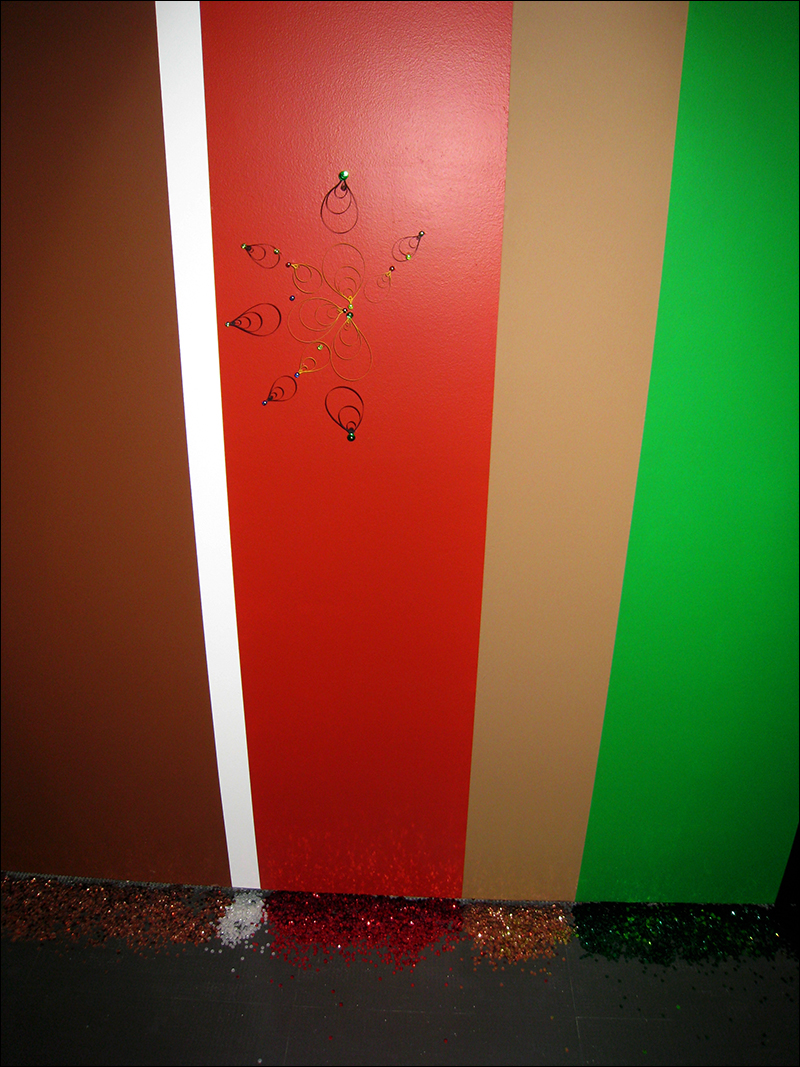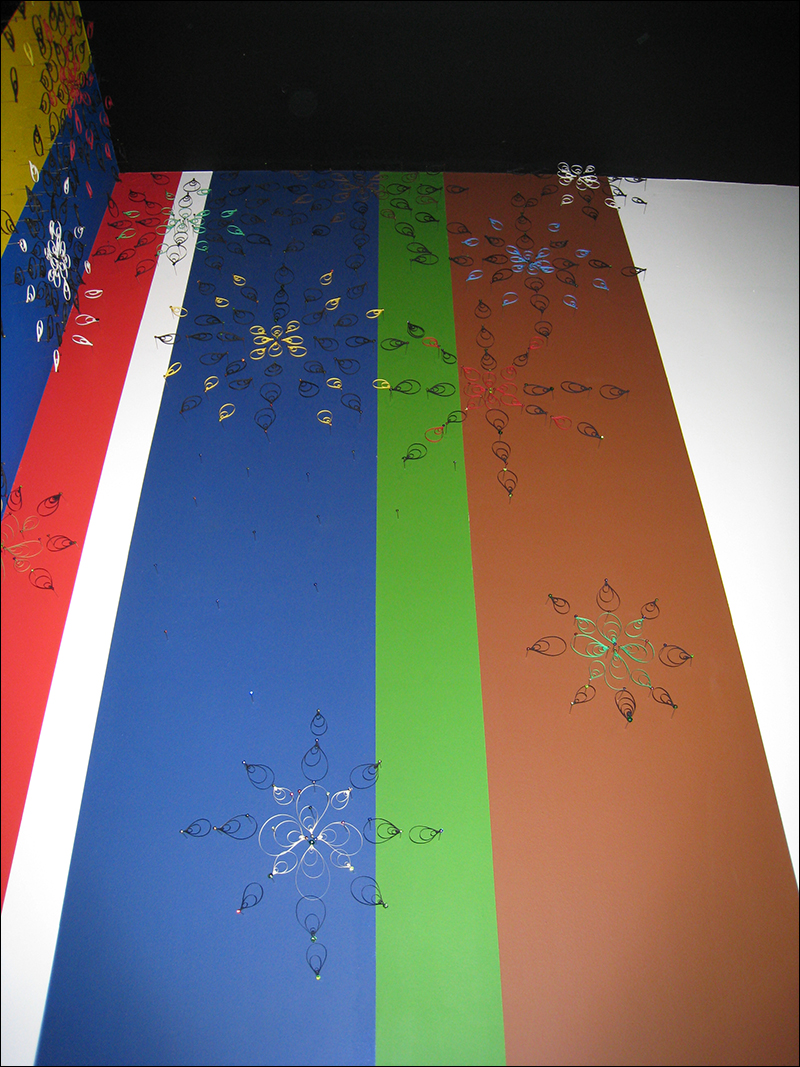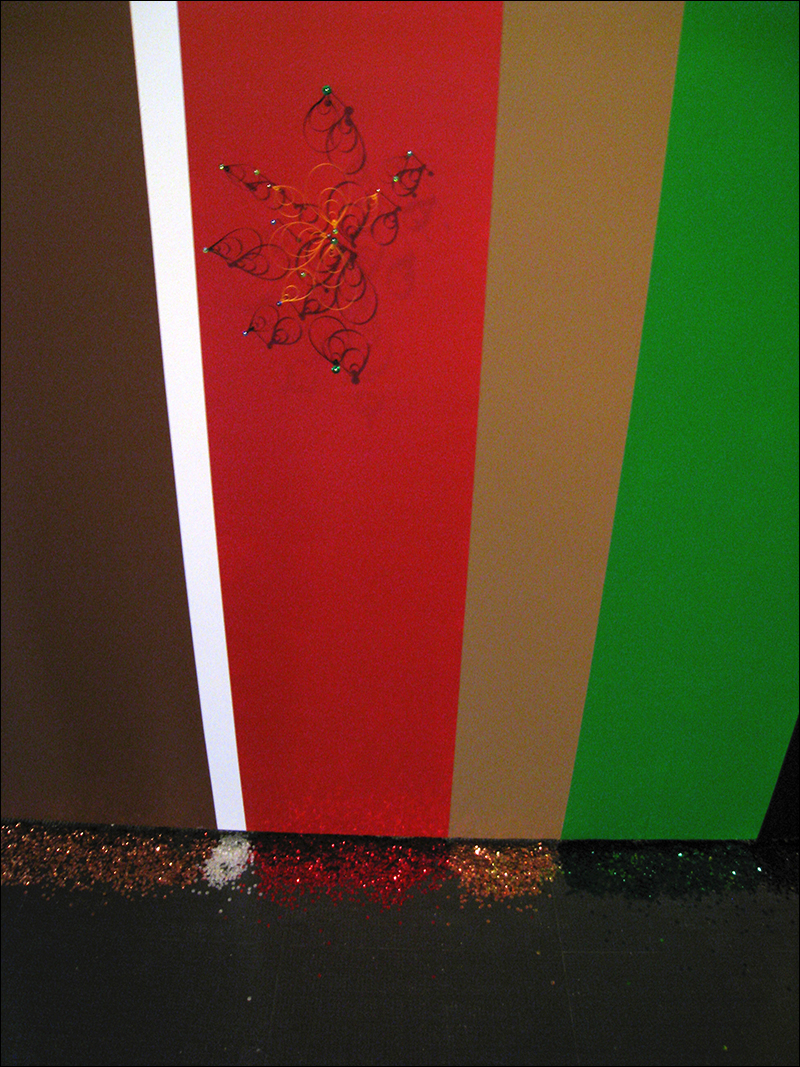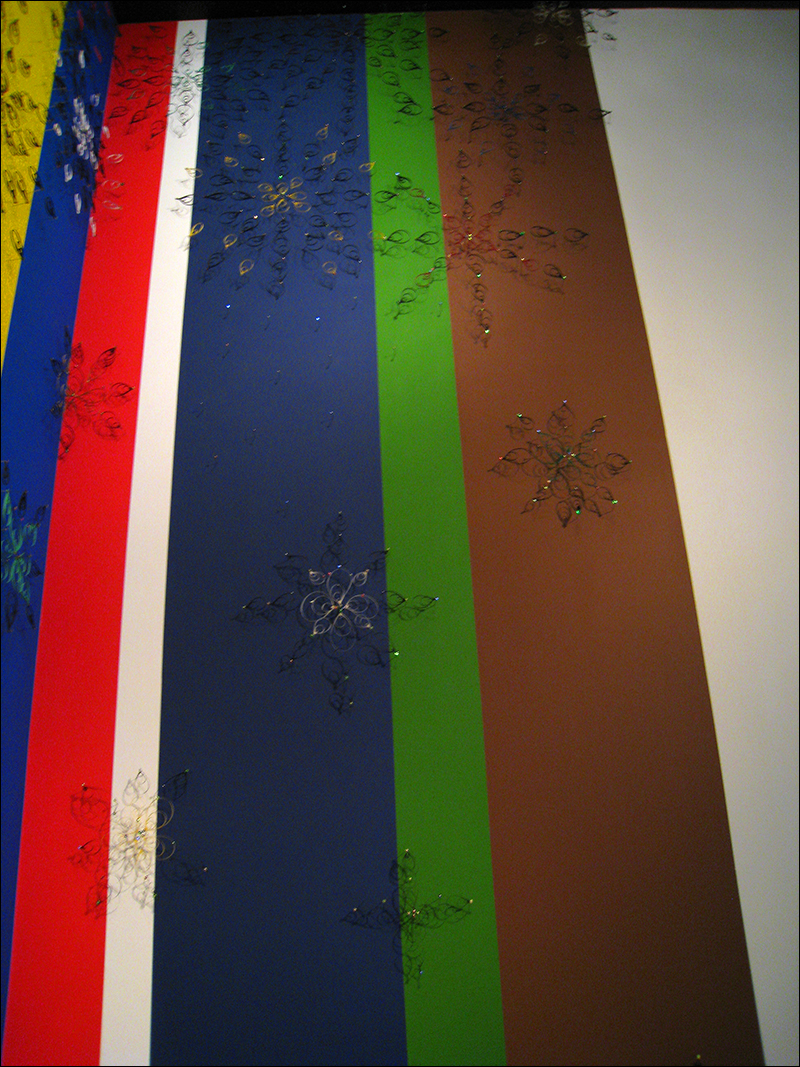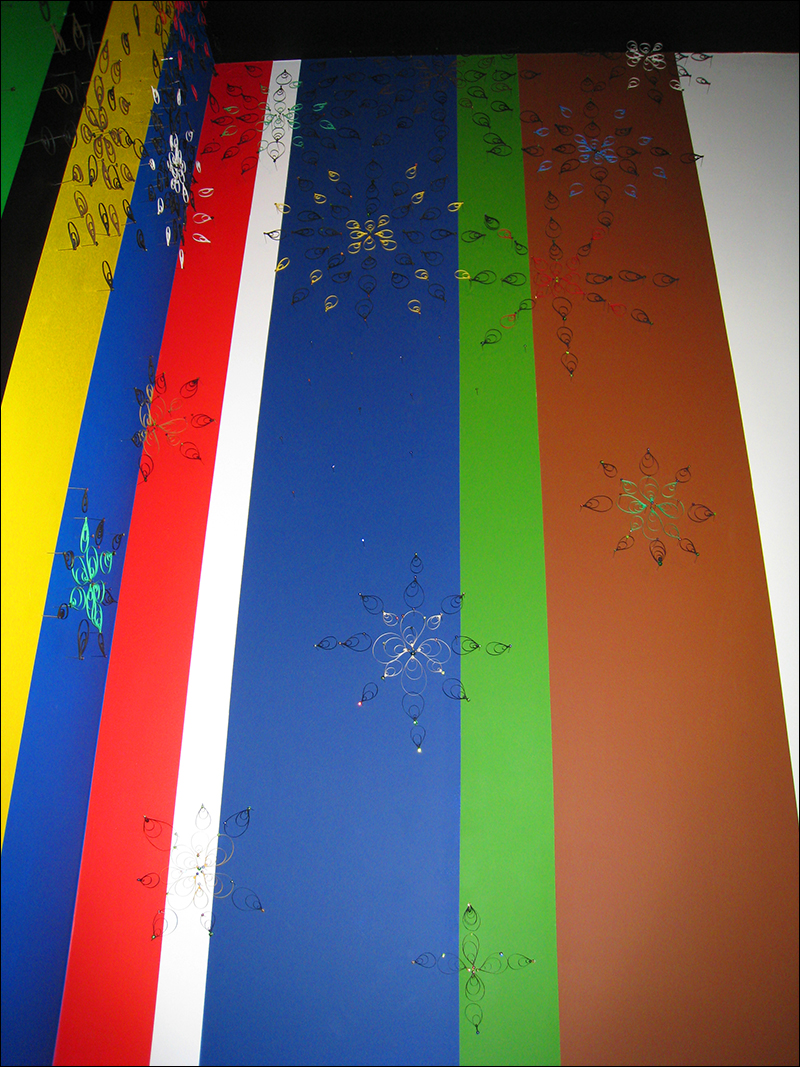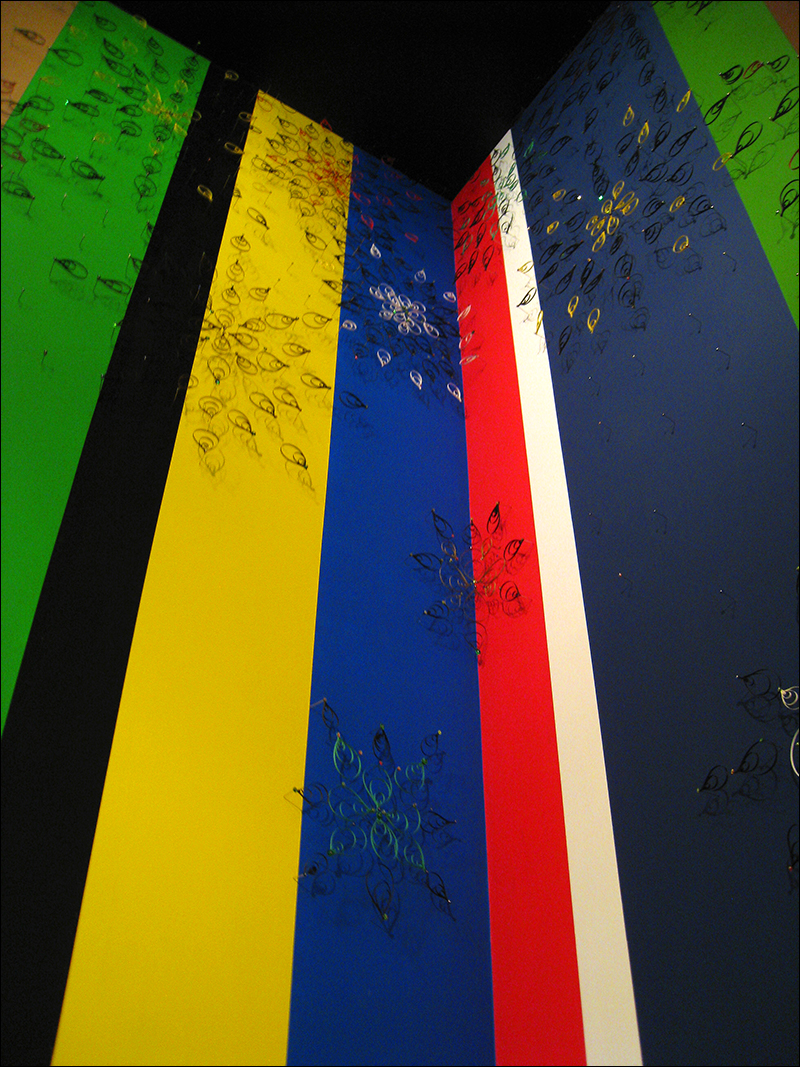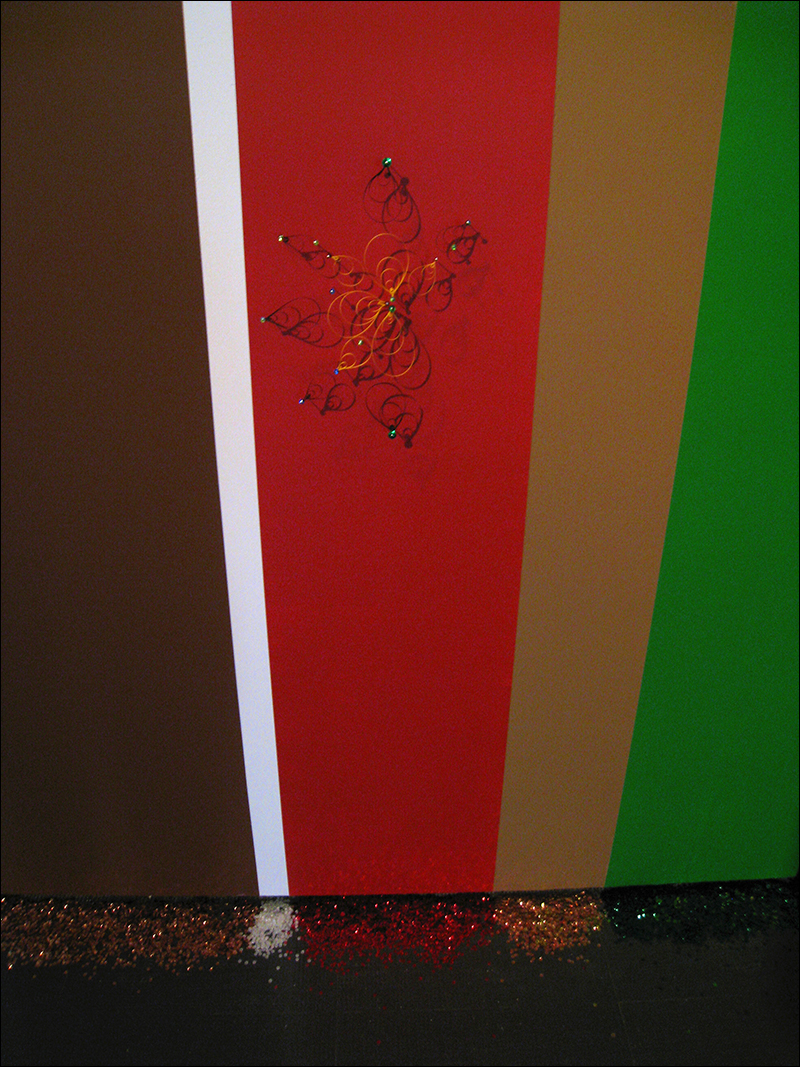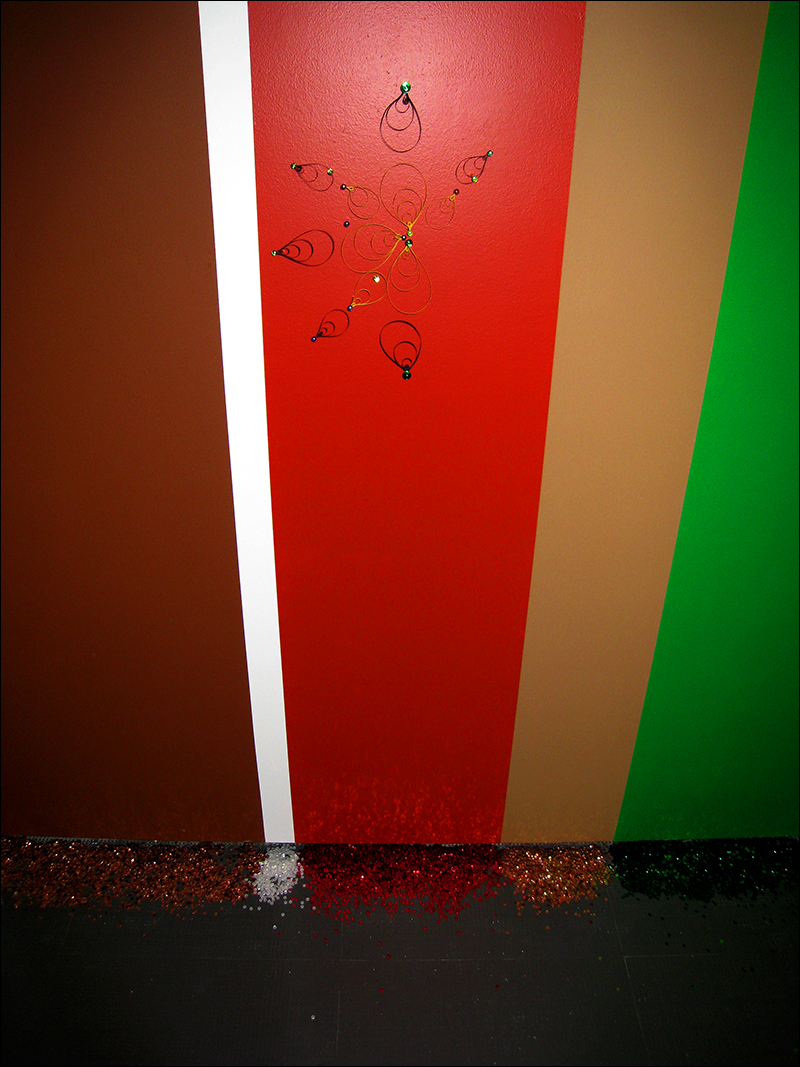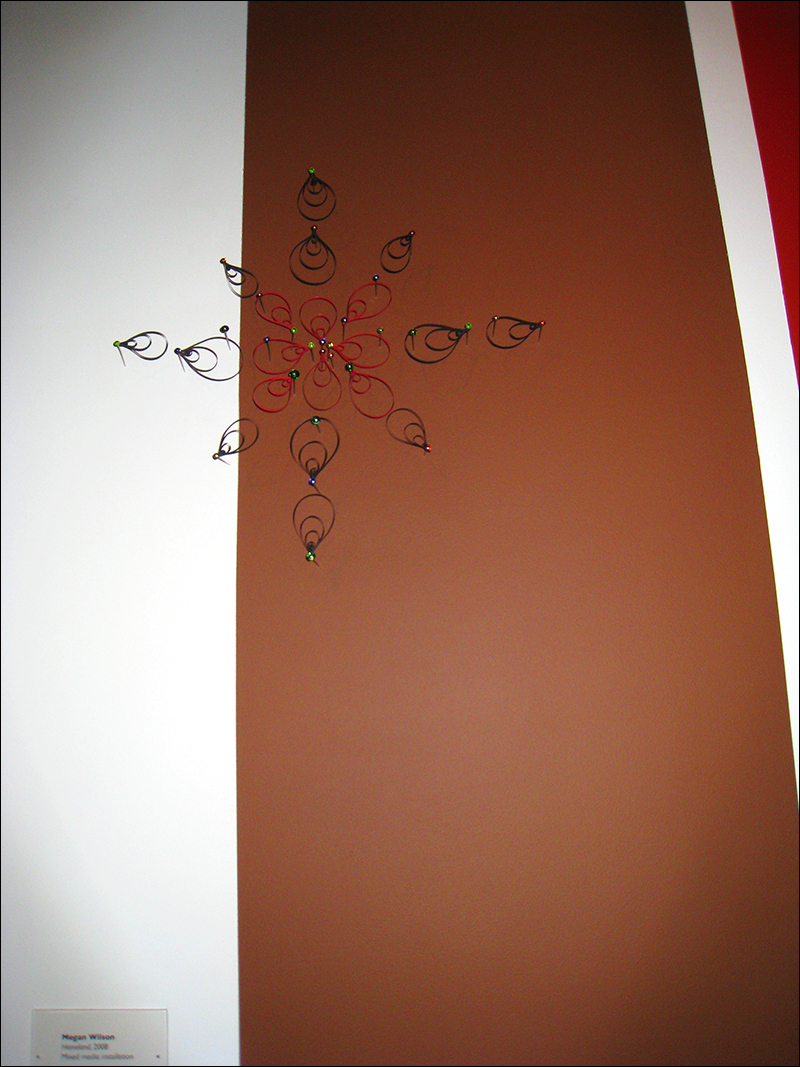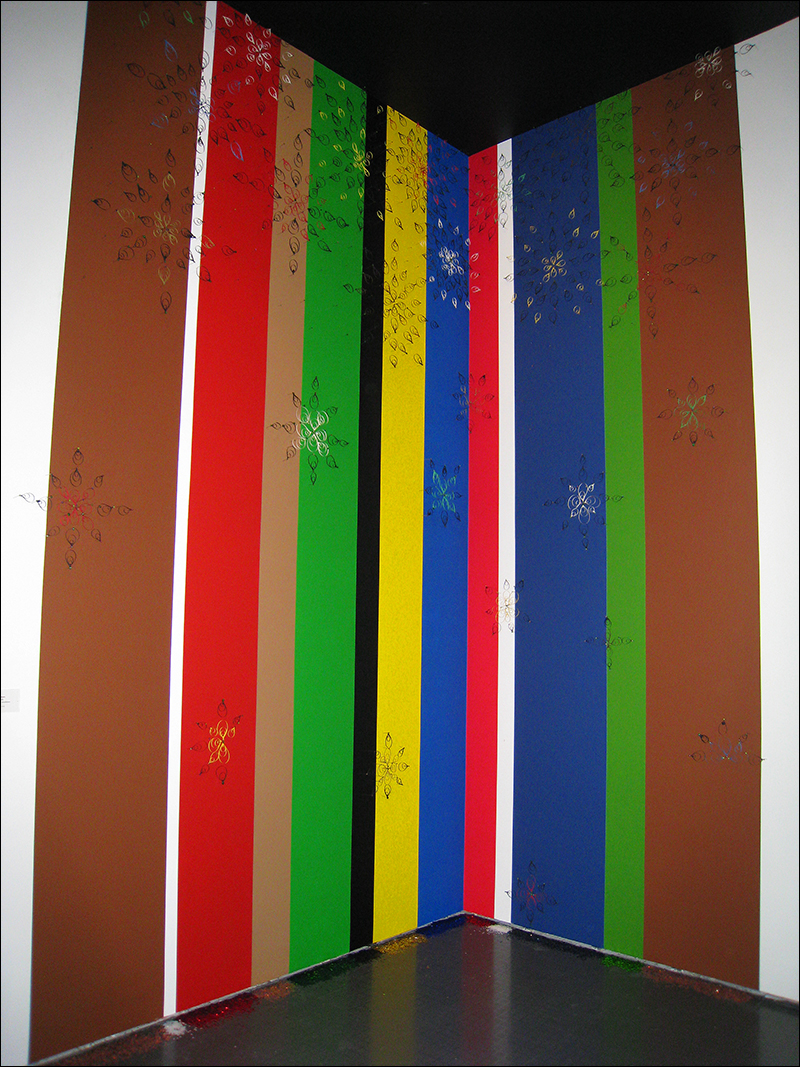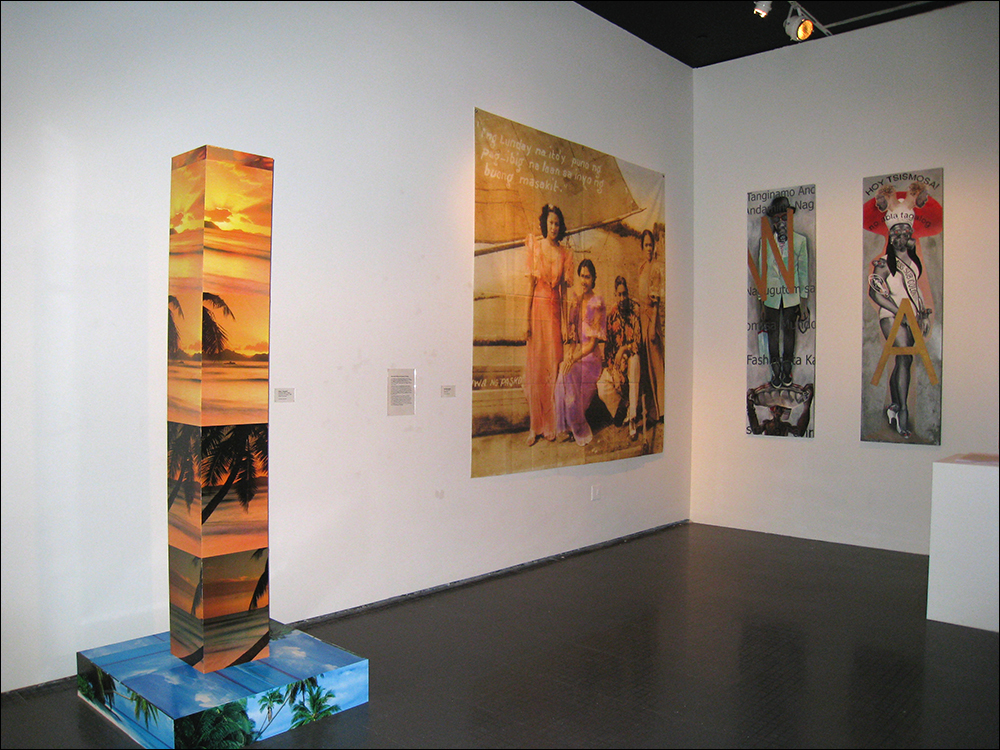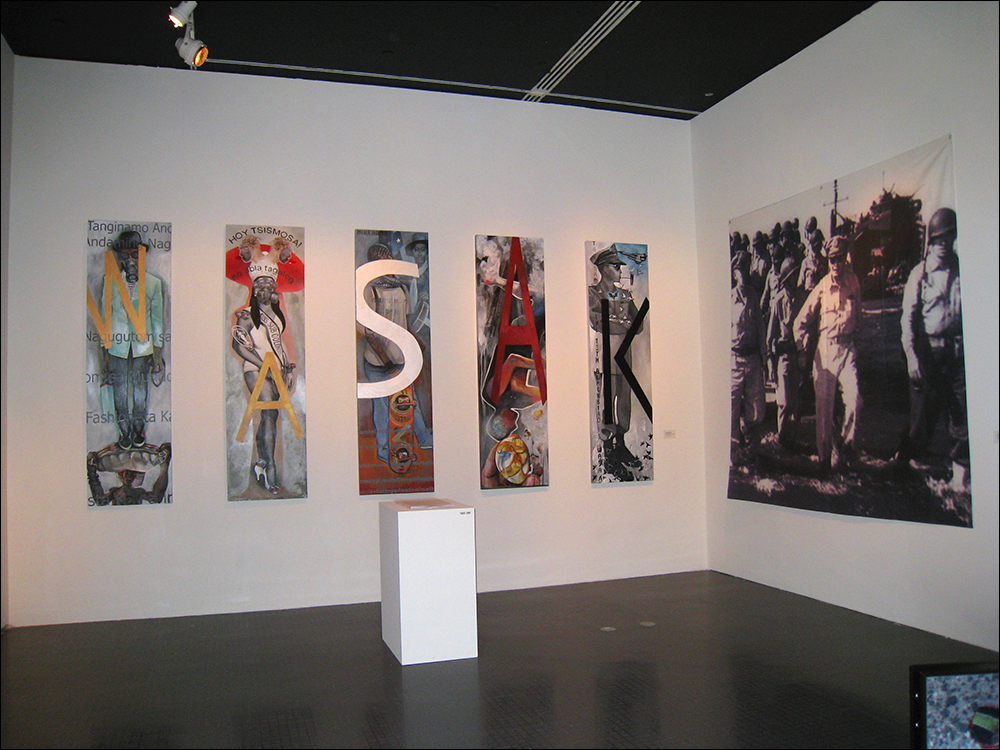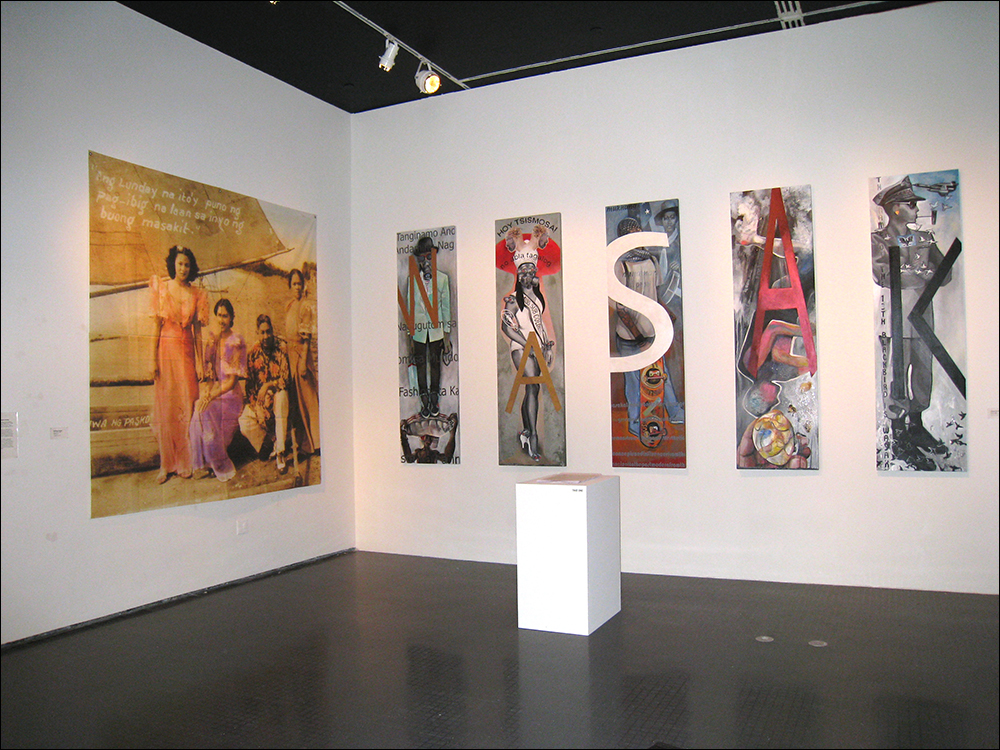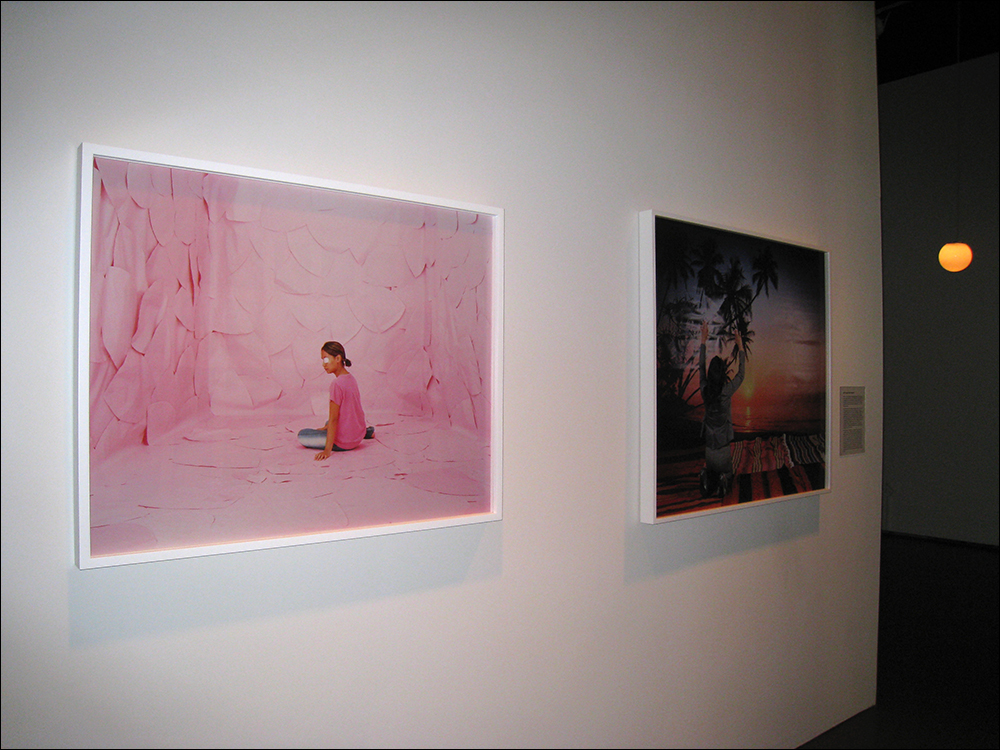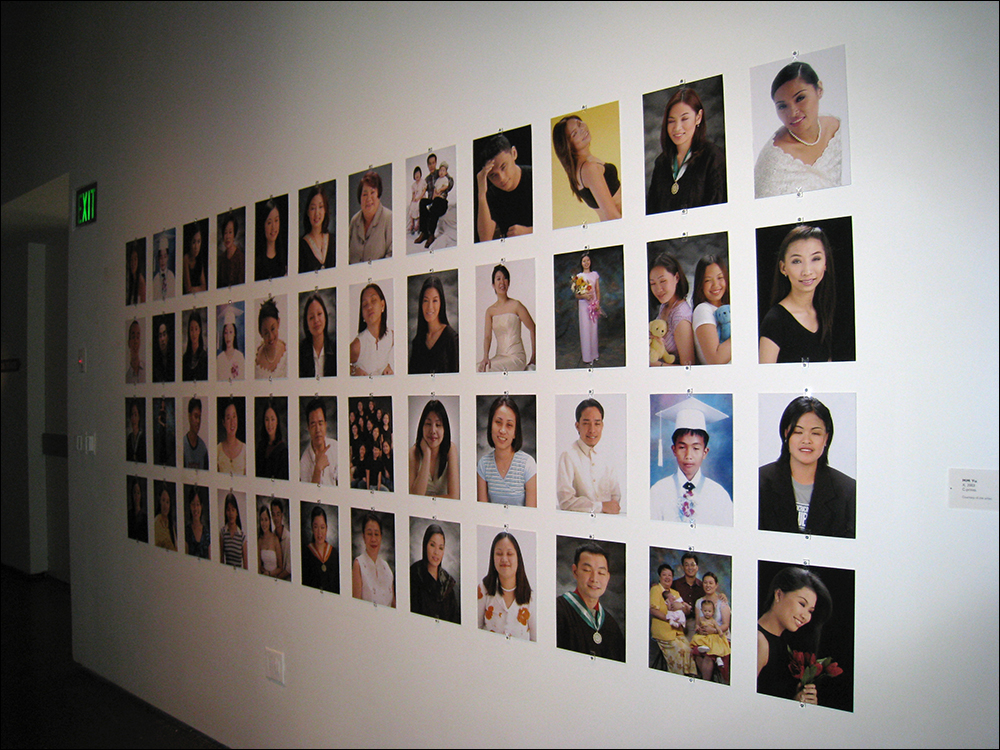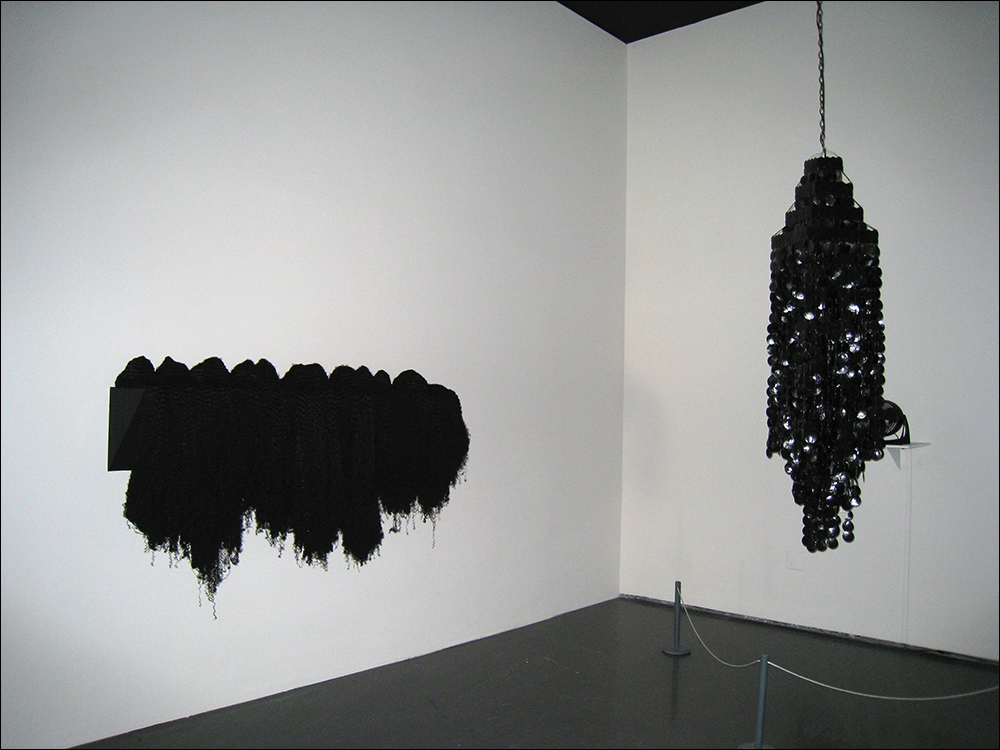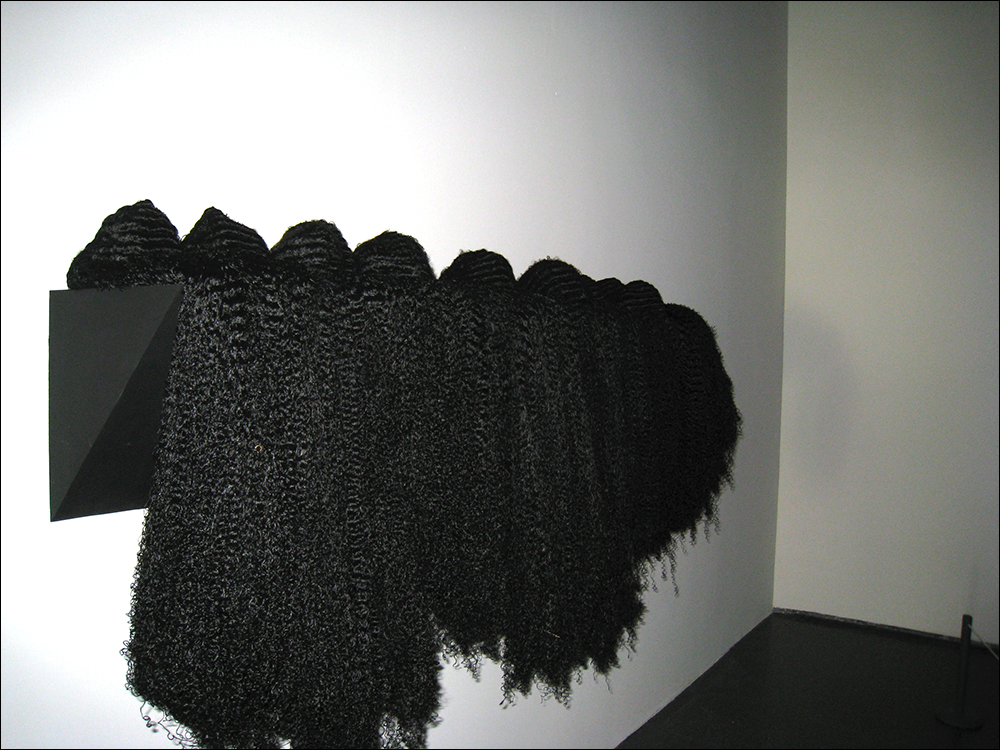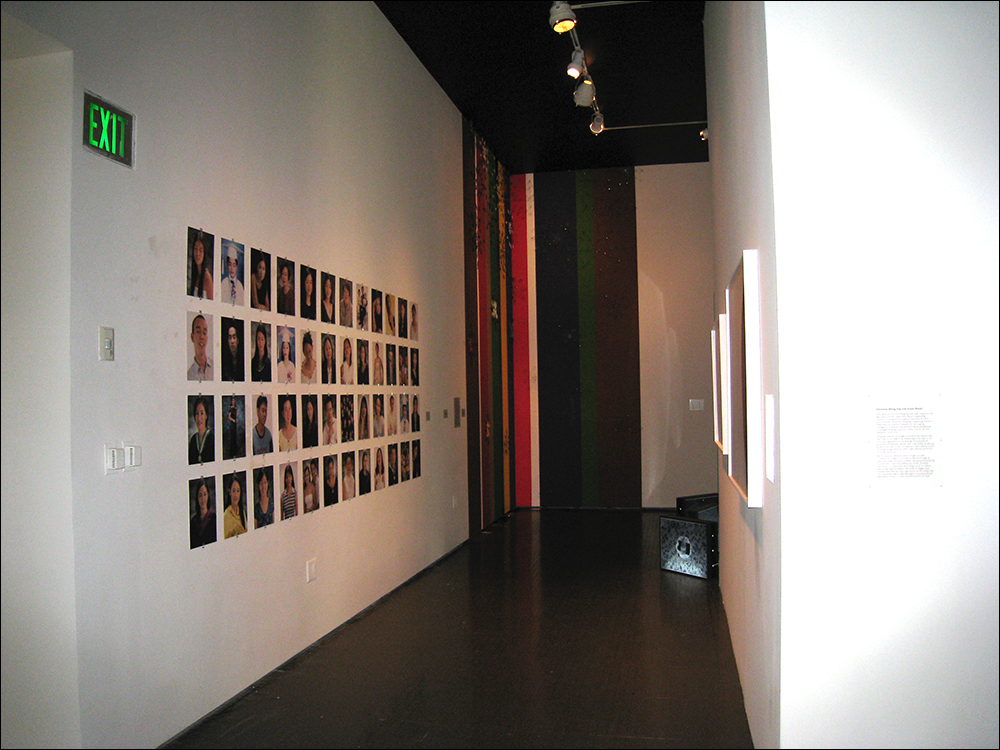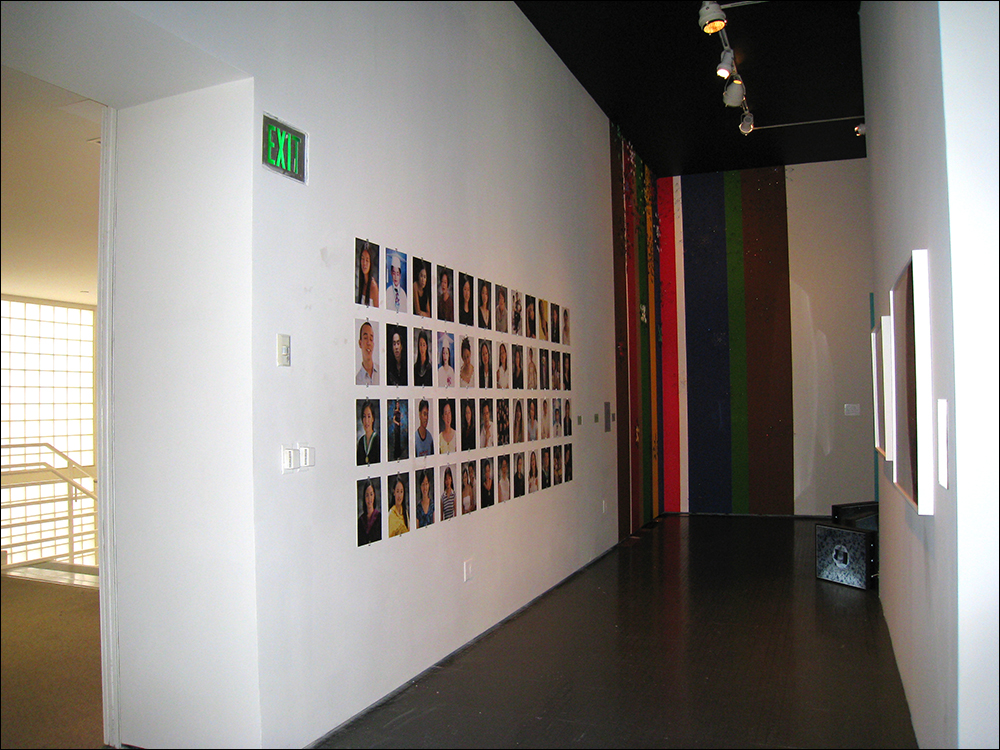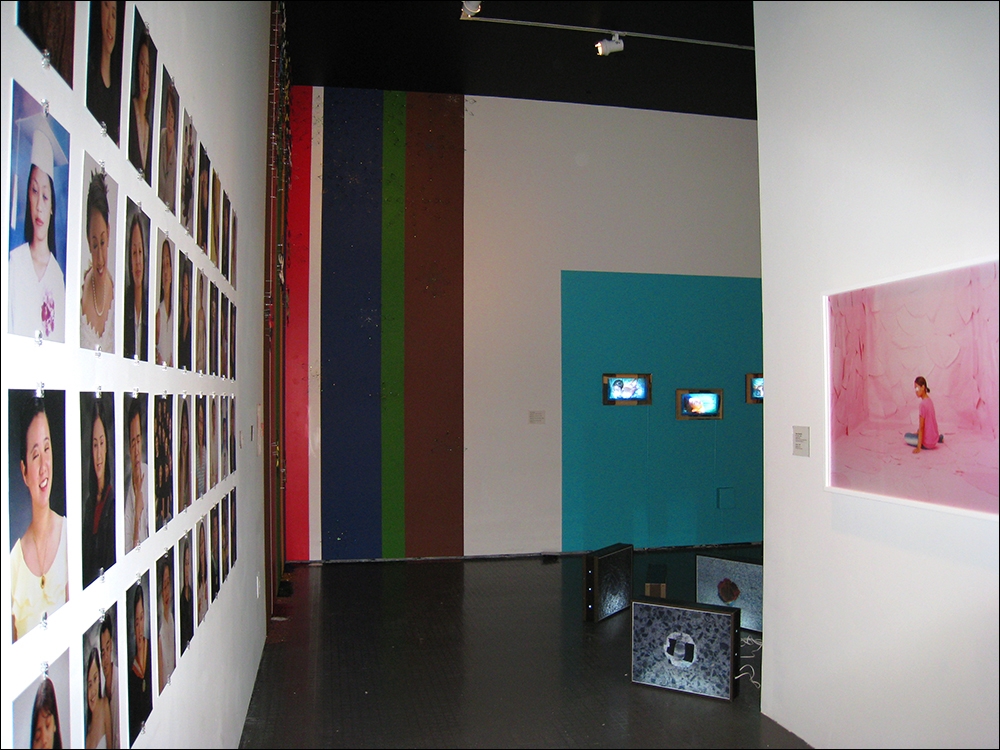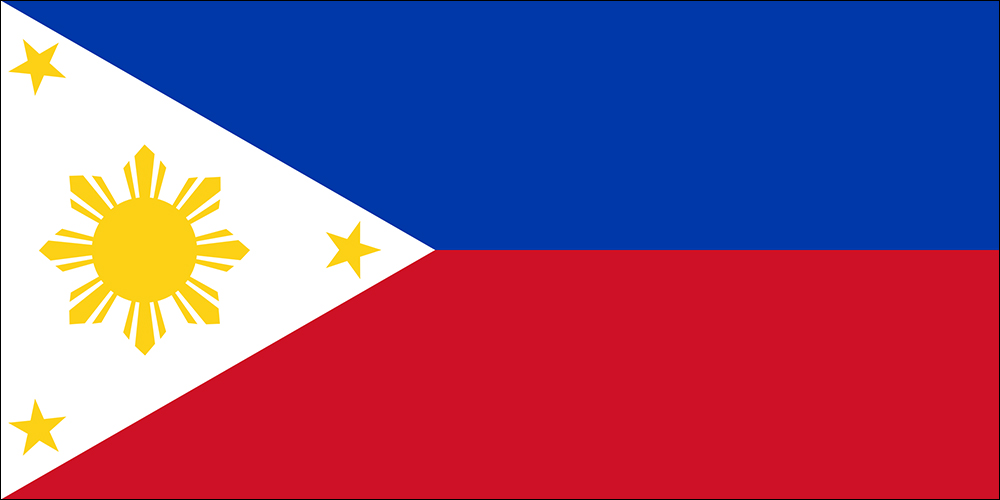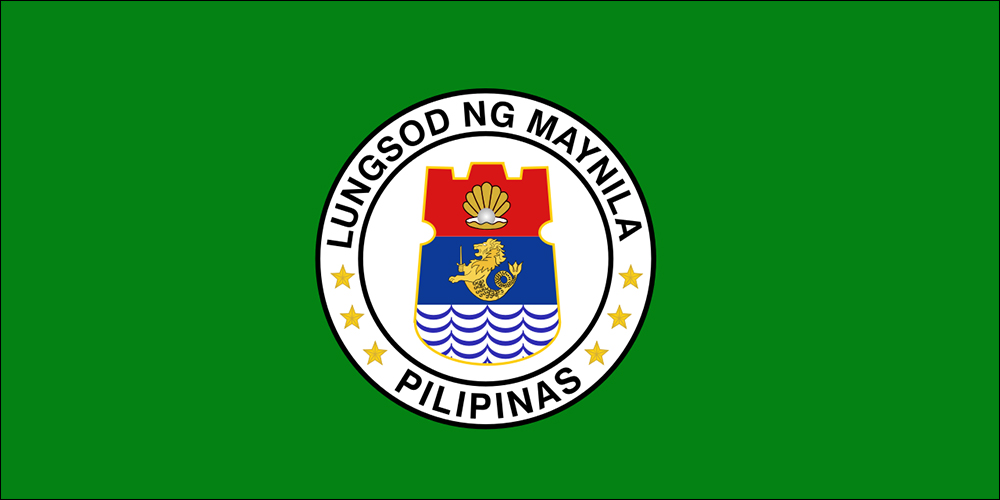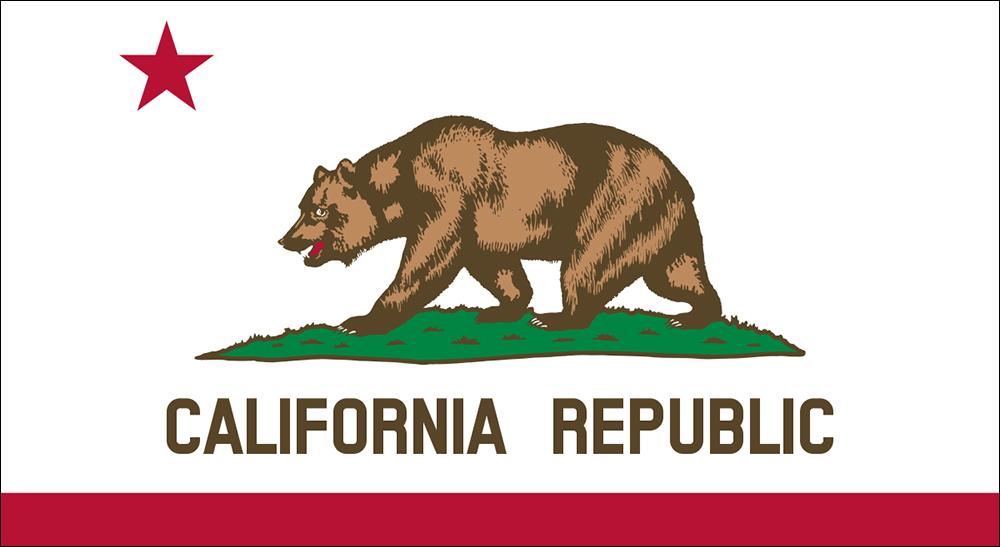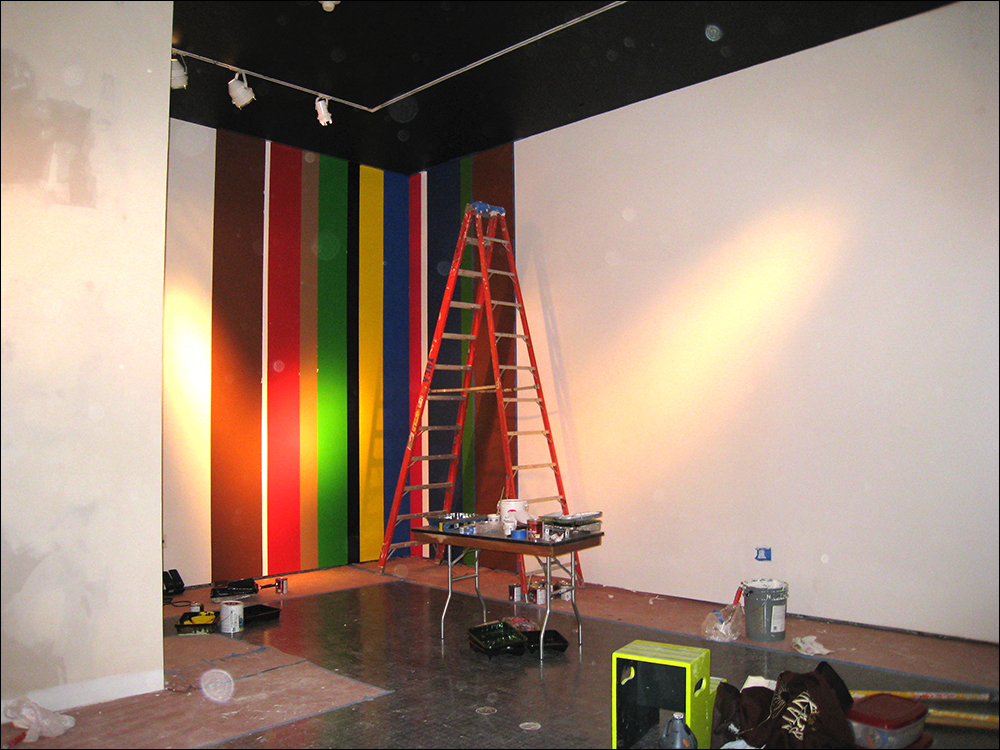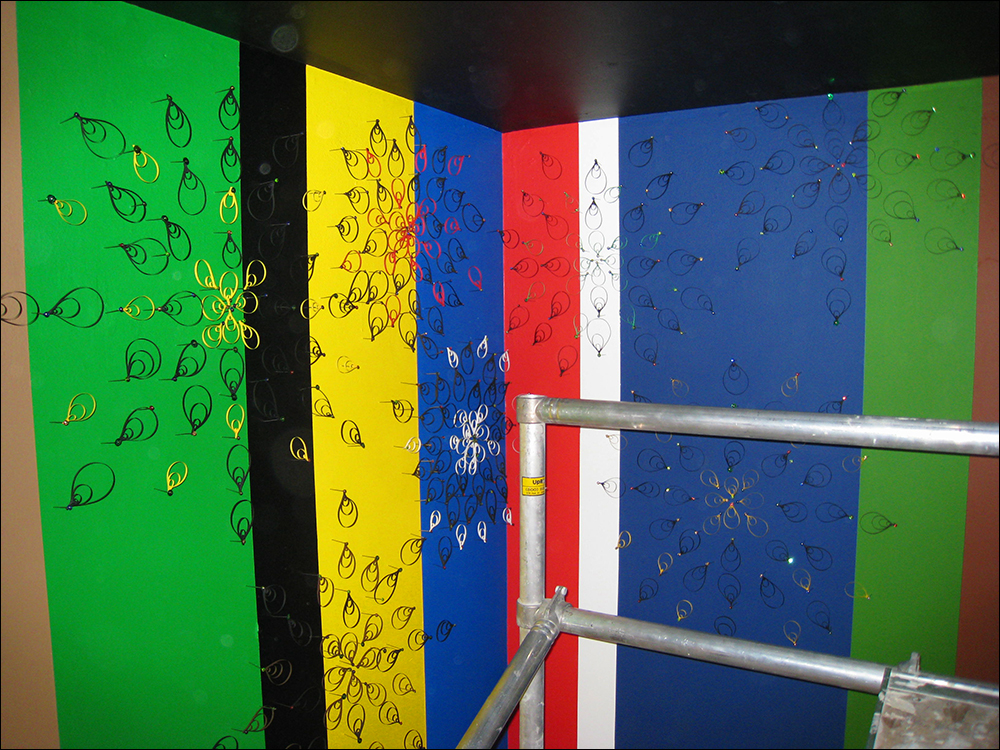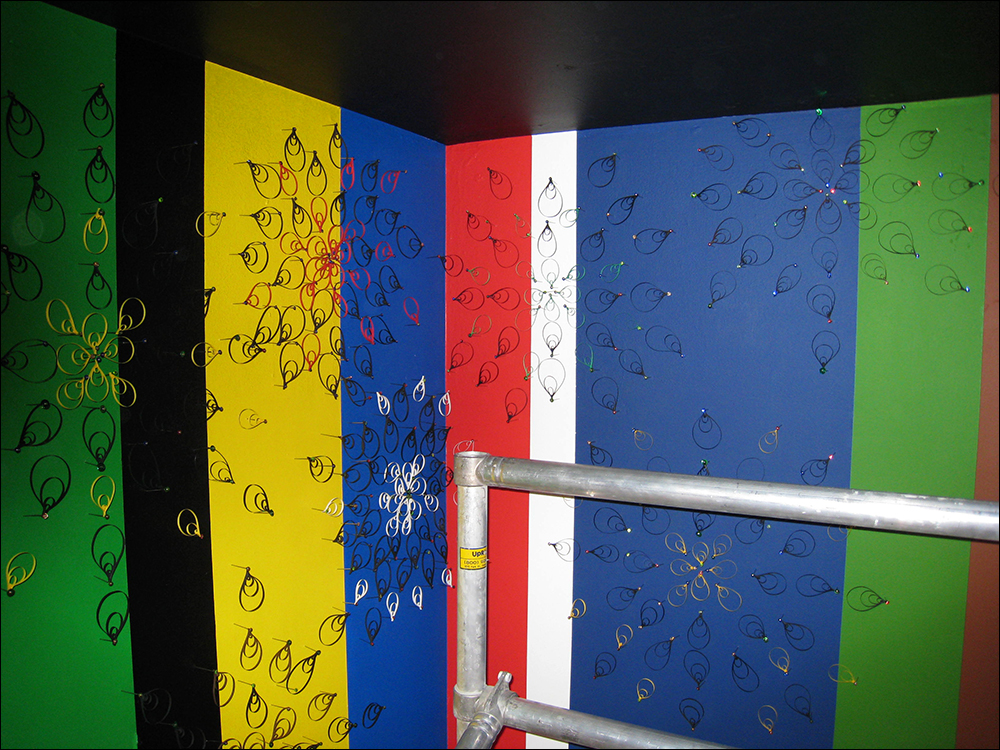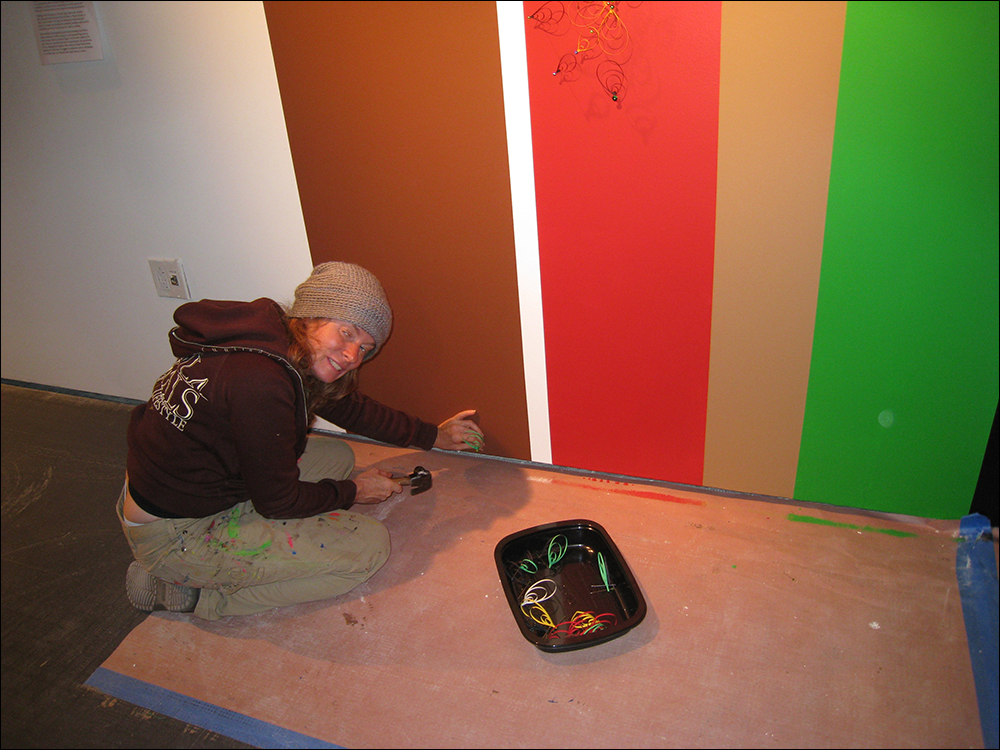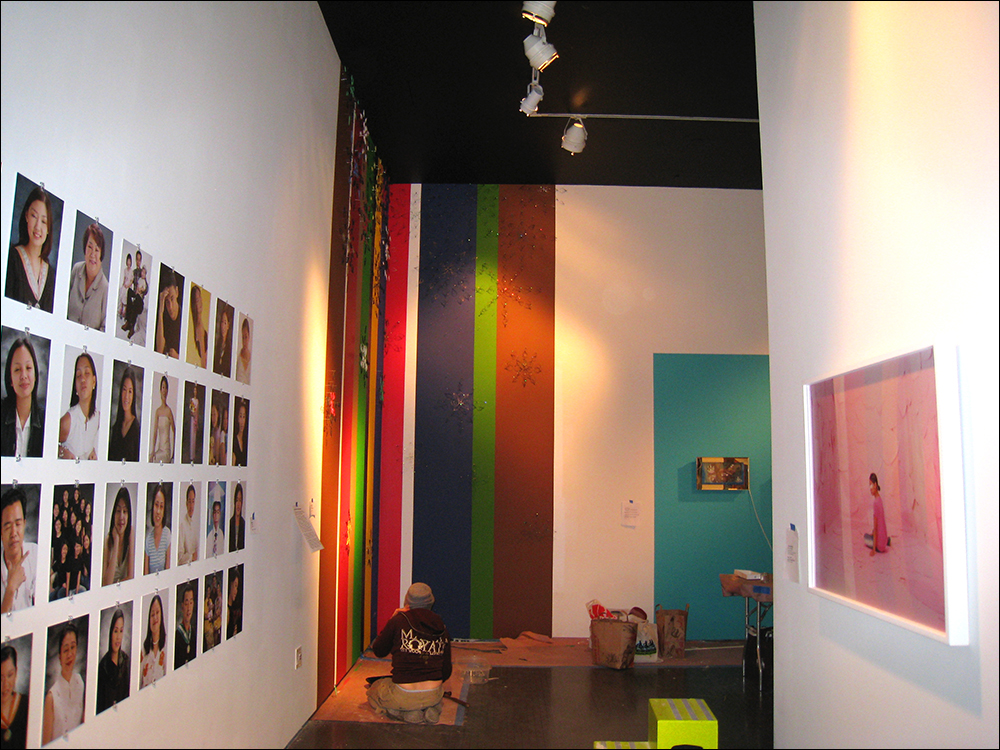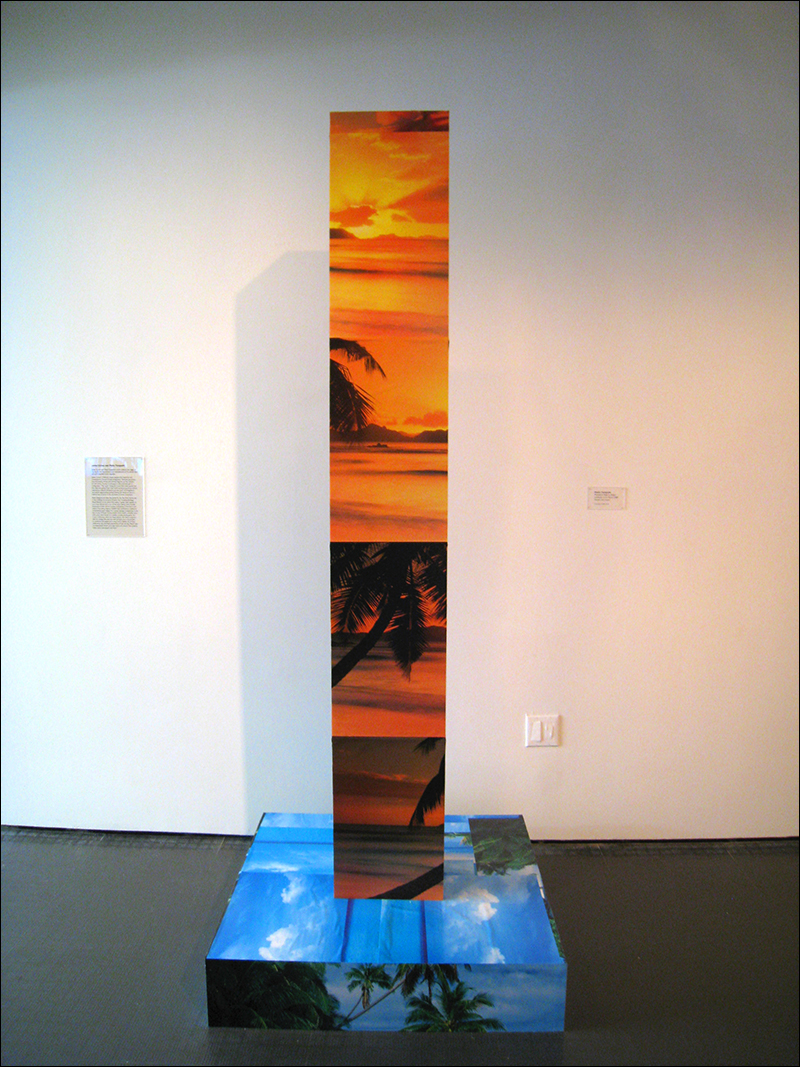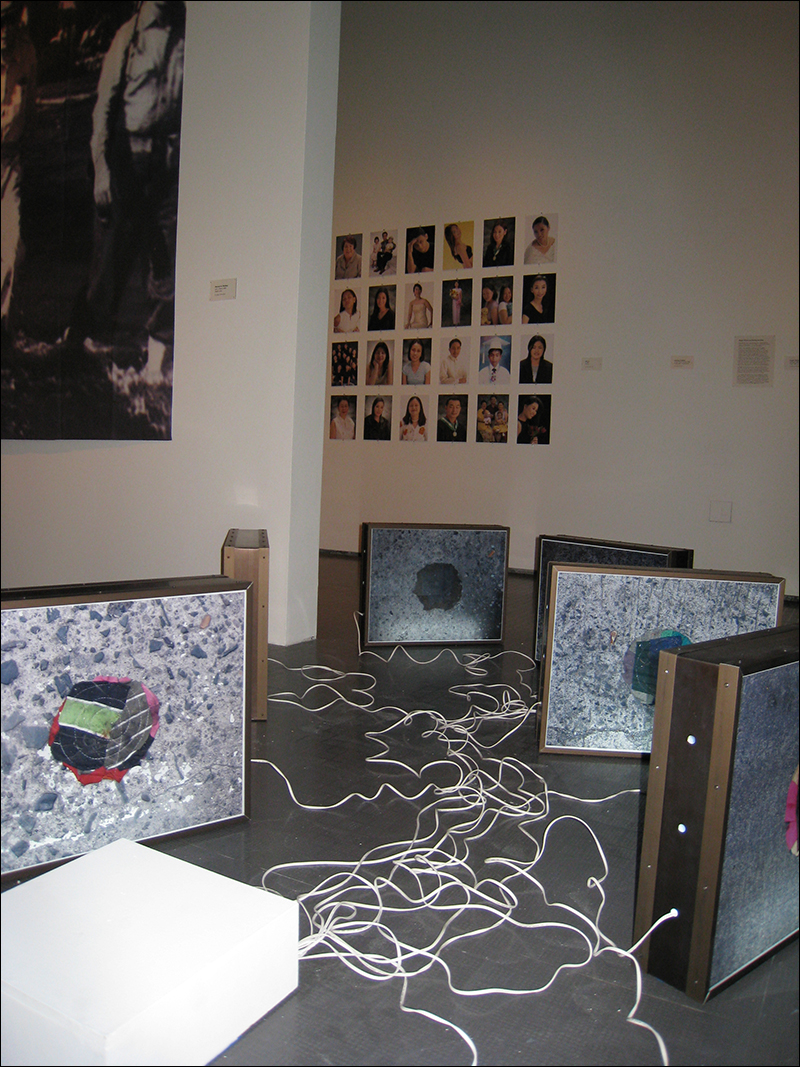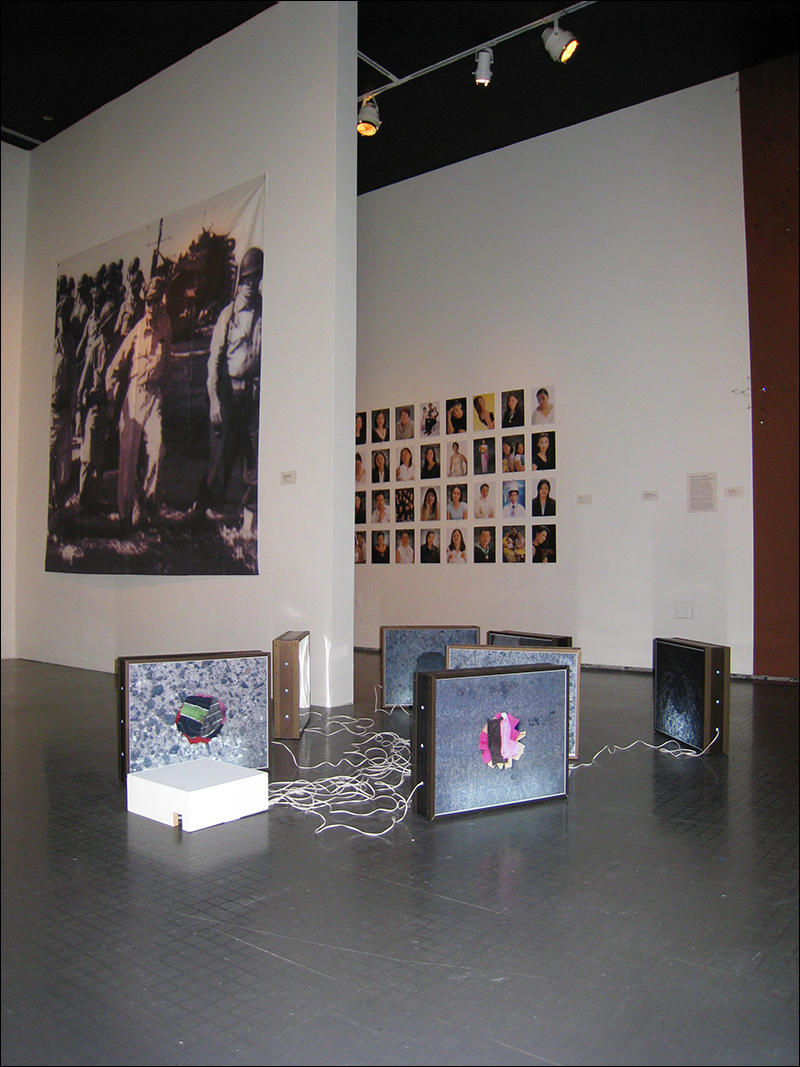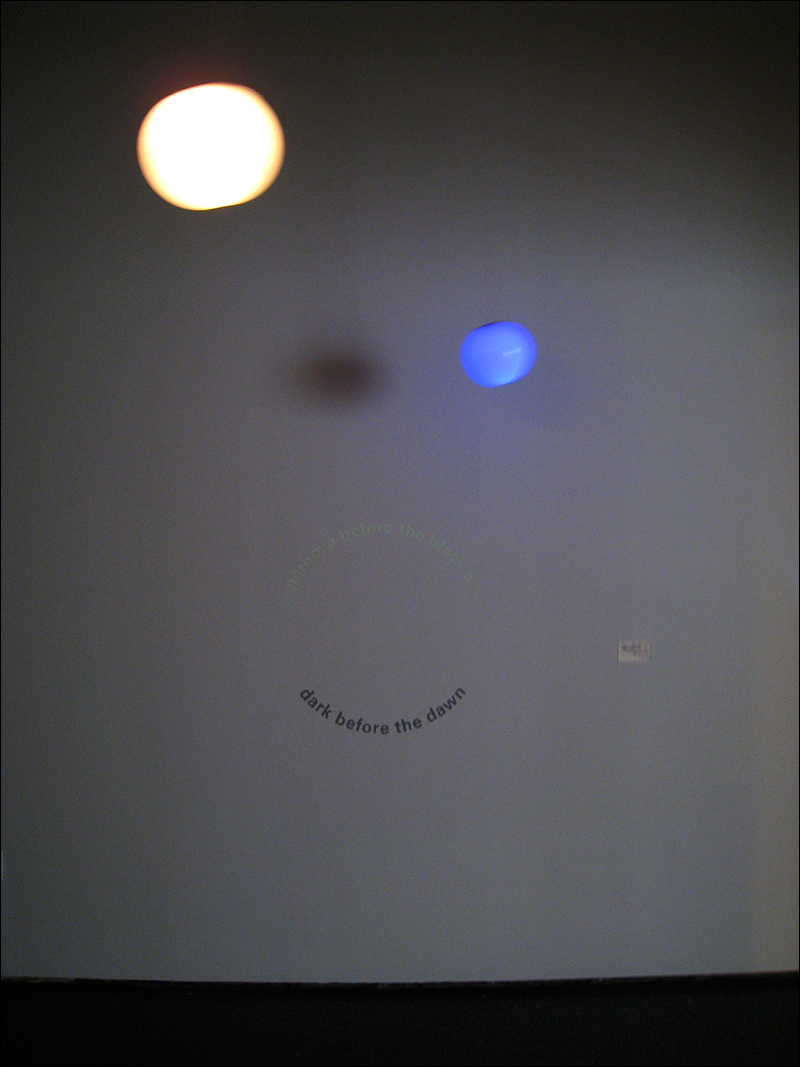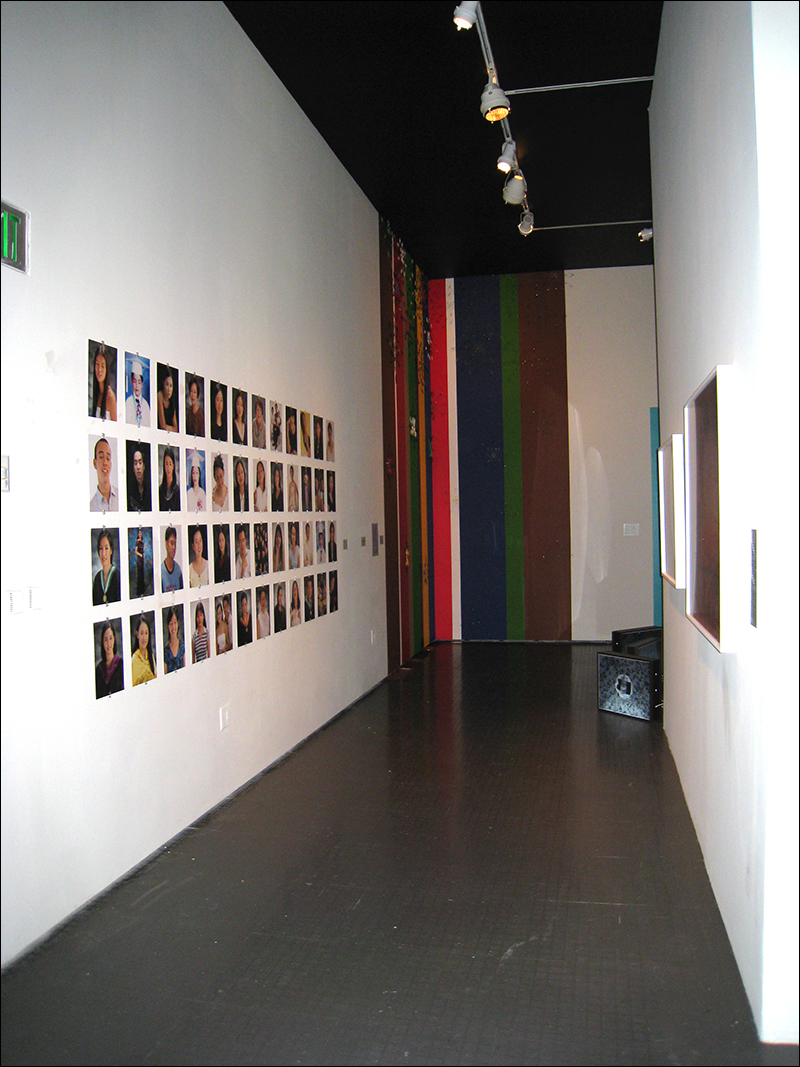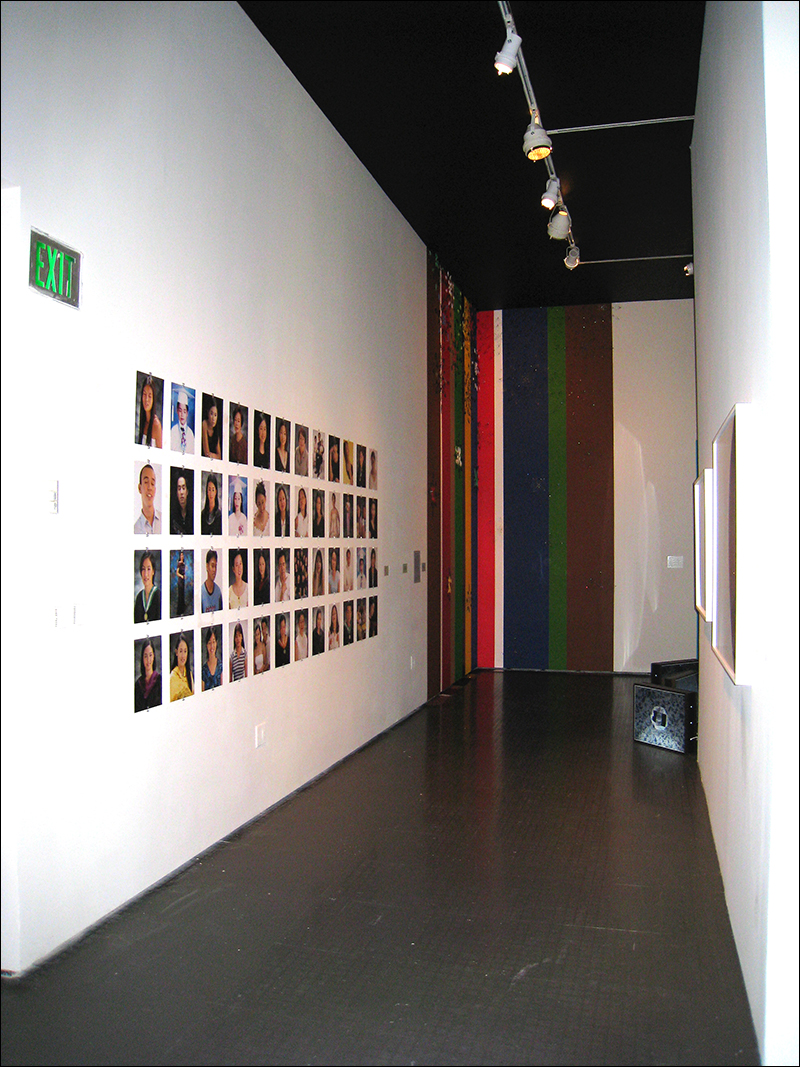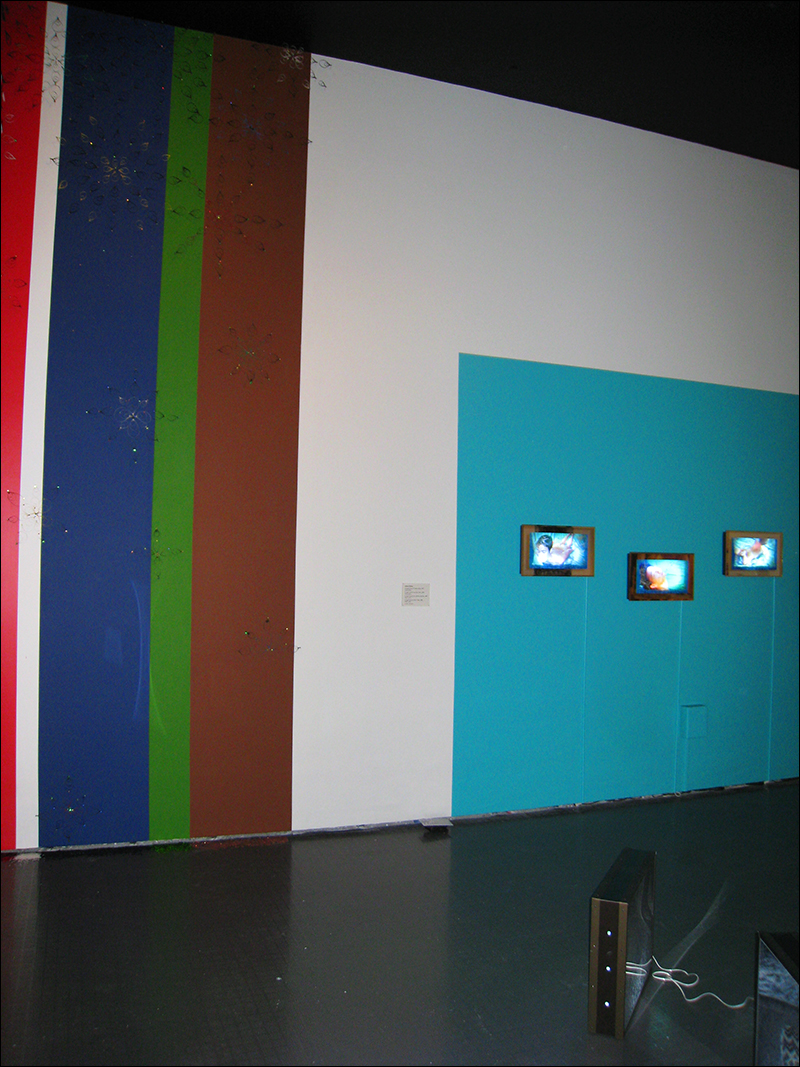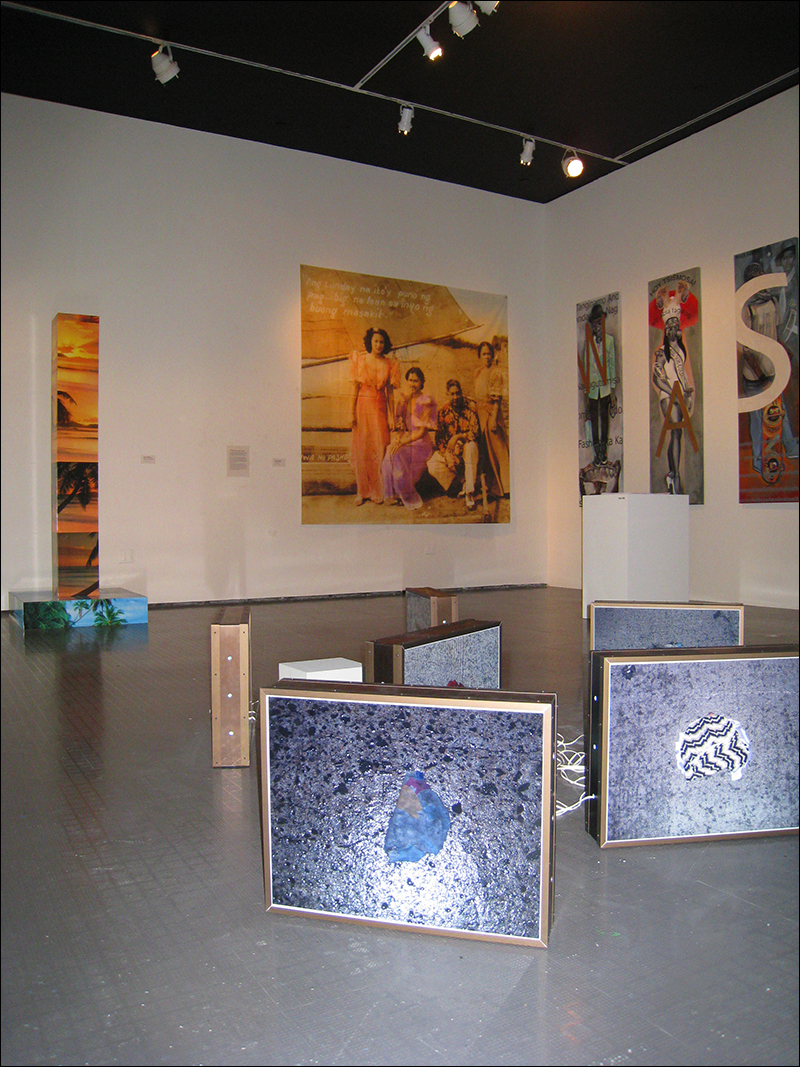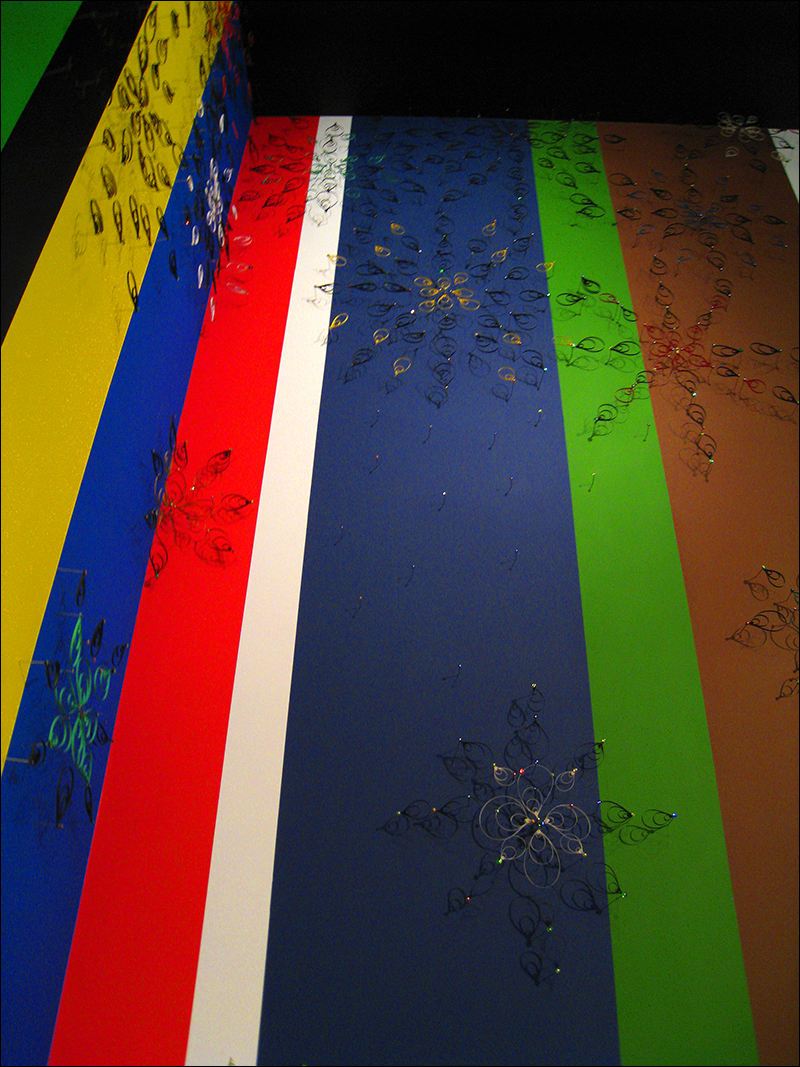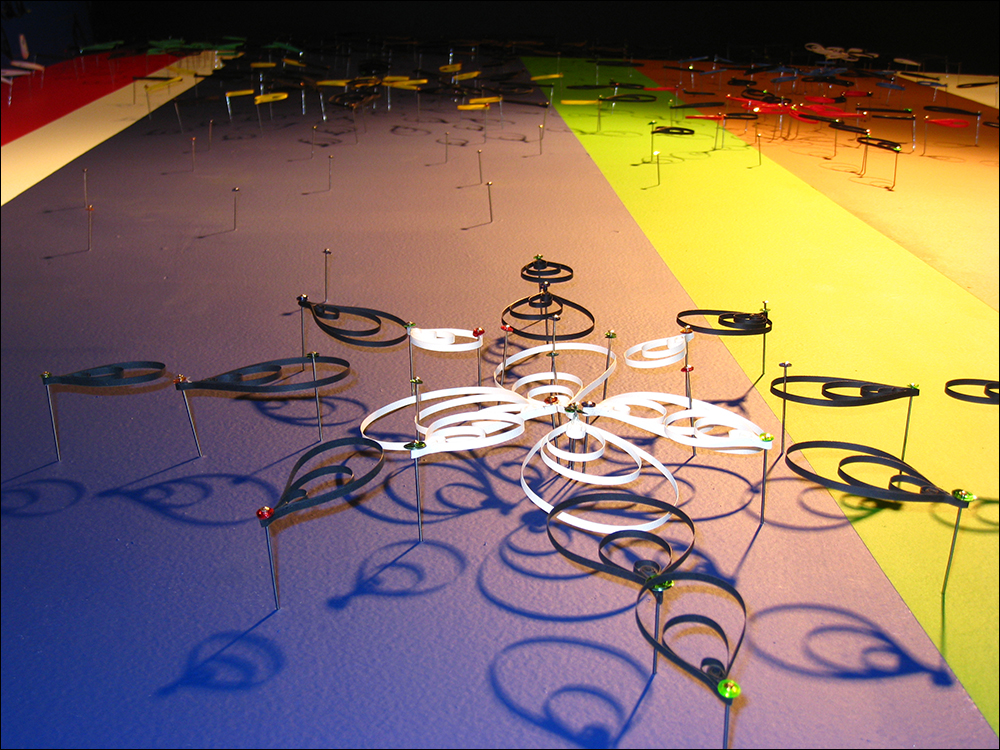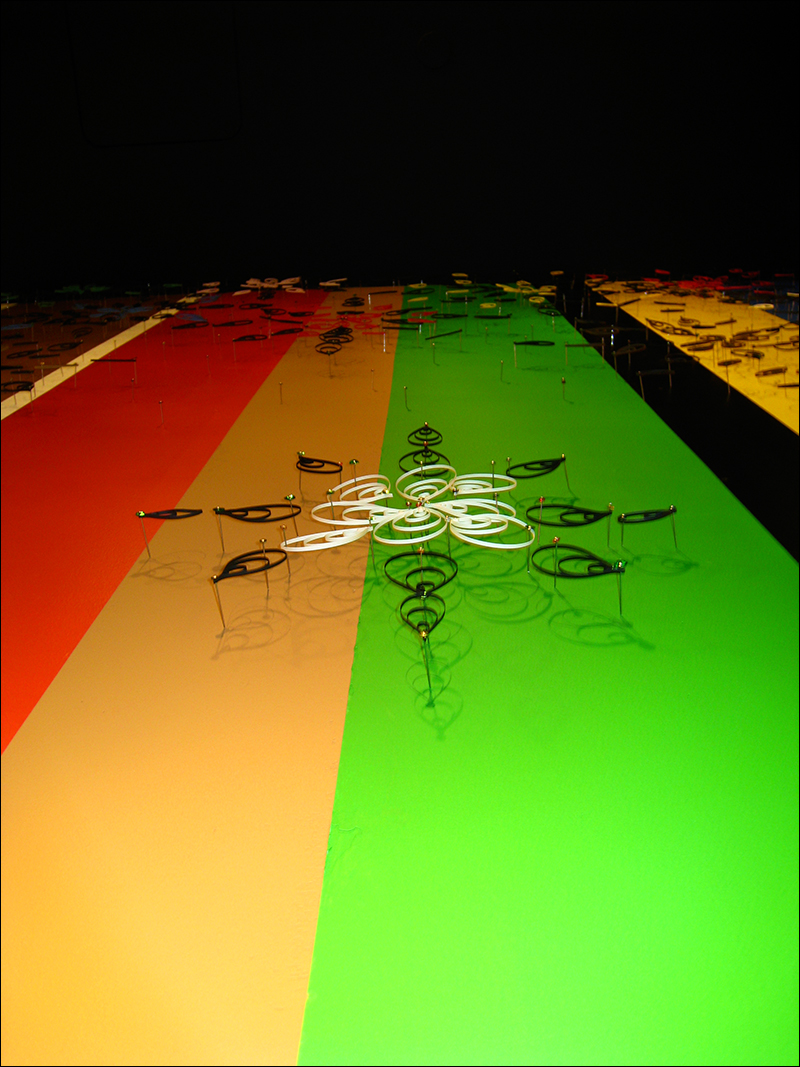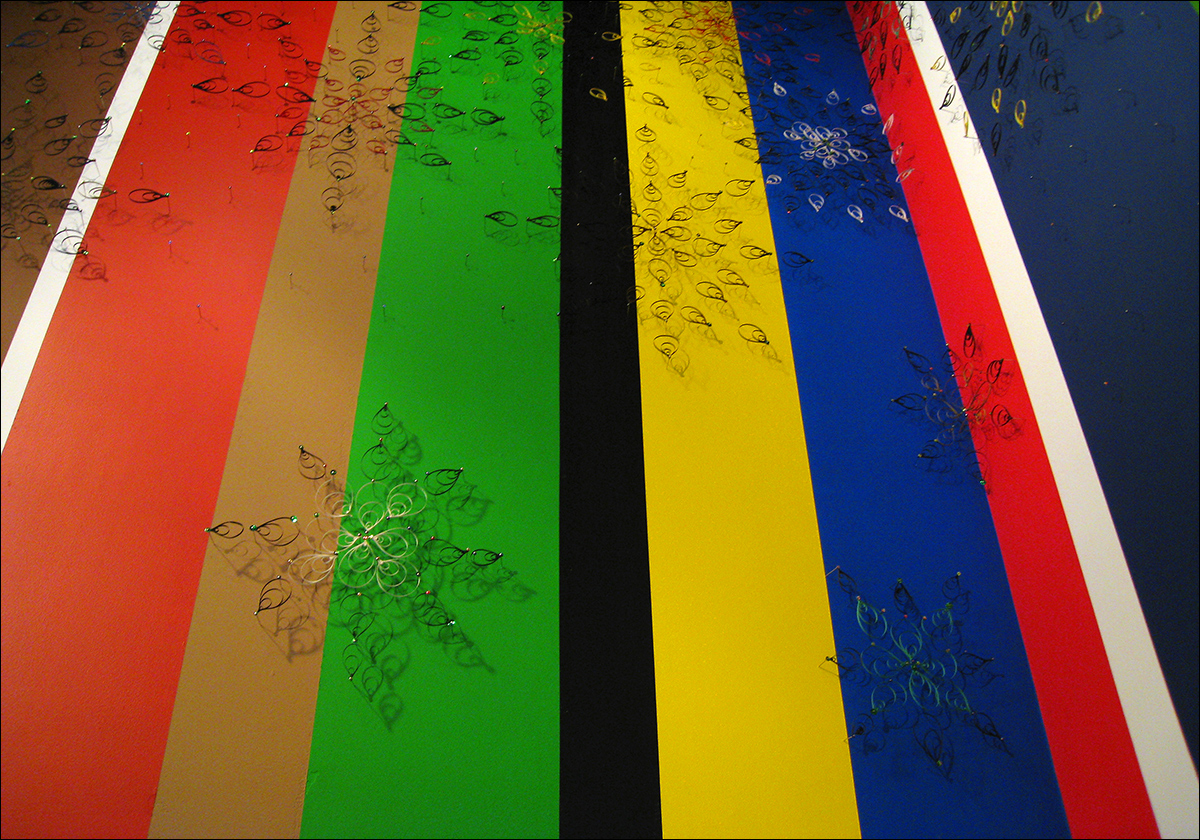Bay Area Now 5 - Galleon Trade - Homeland
Bay Area Now 5, Galleon Trade was part of the international exchange that was developed, curated, and organized by Jenifer Wofford
Sep 4–Oct 19, 2008
Yerba Buena Center for the Arts
Megan Wilson, Homeland, mixed media installation, detail, Yerba Buena Center for the Arts, 2008
Galleon Trade
Initiated, curated, and organized by Jenifer Wofford
Jenifer Wofford, 2007:
Galleon Trade is an exchange exhibition of artists with ties to the Philippines, Mexico, and California. Having recently organized an exhibition of Manila-based artists for a gallery in Berkeley, California, I am now putting together another show heading the other direction back across the Pacific Ocean. Taking the historic Acapulco-Manila galleon route as its metaphor of origin, this exhibition seeks to create new routes of cultural exchange along old routes of commerce and trade. Galleon Trade will be hosted by the three Mag:Net galleries in Metro Manila, Philippines, in summer 2007.
Galleon Trade will feature well-known, innovative California-based artists Stephanie Syjuco, Julio Morales, Christine Wong Yap, Megan Wilson, Jaime Cortez, Johanna Poethig, Eliza Barrios, Reanne Estrada, Mike Arcega, Gina Osterloh, and Enrique Chagoya. Their work crosses multiple disciplines, from painting/drawing, to installation, sculpture, video, photography, performance and new media. These 11 artists will install their works across the three Mag:Net galleries simultaneously, with three to four artists in each space.
In addition to the three exhibitions, there will be an associated series of lectures, screenings, performances and special events all tied to Galleon Trade, at spaces including Green Papaya Art Projects, The Living Room, University of the Philippines, and Mag:net Katipunan.
WHY GALLEON TRADE:
The myriad connections and histories shared between California, Mexico, and Philippines are tremendous, but have rarely been acknowledged in a creative setting. Contemporary issues of postcolonial history, transnational relationships, globalization and commerce provide ample inspiration for creative output, and new ways of creating dialogue across multiple communities. The potential for exchange and new opportunities for dialogues across the Pacific Ocean is enormous, and untapped.
California, Mexico, and the Philippines all have thriving arts communities and artist-run galleries, despite economic challenges and lack of traditional arts funding in many of these communities. Galleon Trade aims to prove that grassroots international arts exchange can still occur despite these challenges: it will be critical as yet another model, and a template, for how international arts exchange can manifest creatively.
HISTORICAL CONTEXT:
The Acapulco-Manila galleons were Spanish trading ships that sailed across the Pacific Ocean between Manila in the Philippines and Acapulco, Mexico. The galleons ran this route once or twice per year from 1565 to 1815. The Spanish were the first Europeans to attempt to colonize the Philippines, and immediately sent ships across the Pacific from their colonial base in Mexico, but it wasn’t until 1565 that they discovered a viable route back across the Pacific by following north-easterly trade winds and currents to Northern California, then following the coastline south to Acapulco, effectively making a large triangle.
This discovery initiated the trading route that became known as the "nao de la China", or "the ship of China": though the Philippines provided some products, it was spices and goods from the "Spice Islands", and silk, porcelain, jewels, gold and other valuables from China which made the Manila galleon trade so lucrative. There was huge demand in China for silver from the New World mines, and westbound Manila Galleons were loaded with it. Europe and the New World's appetite for these products from the Far East became insatiable, and the huge profit margin made the perilous journey worthwhile.
Homeland by Megan Wilson
Bay Area Now 5, Yerba Buena Center for the Arts
Homeland:
Homeland reflects on the immigrant experience that carries with it so many mixed emotions and contradictions in the expectations and realities.
Homeland was initially inspired by my interest in nationalism as "home" within the borders of a geographic location. These invisible boundaries were originally defined to protect and produce more wealth for the rich and powerful. Subsequently, nations were created, visual symbols were developed in the form of flags, and everyone within the restricted areas either became citizens who were led to believe that the unity was ultimately to their benefit, or became property to be consumed and/or traded through colonialism. Today the concept of nationalism has continued to be a polarizing force that serves the elite, yet it has also become more blurred through globalization.
This blurring is what I focused on for the installation. I painted vertical stripes with the colors of the flags of the Philippines, United States, Manila, and California. I overlaid these rigid stripes with organic forms of quilling (a craft from 18th century Europe that involves the rolling, scrolling and fluting of narrow strips of paper) and sequins pinned to the wall as a reference to stars or fireworks that are falling. At the base of the stripes are piles of sequins, suggesting the draining of glory.

